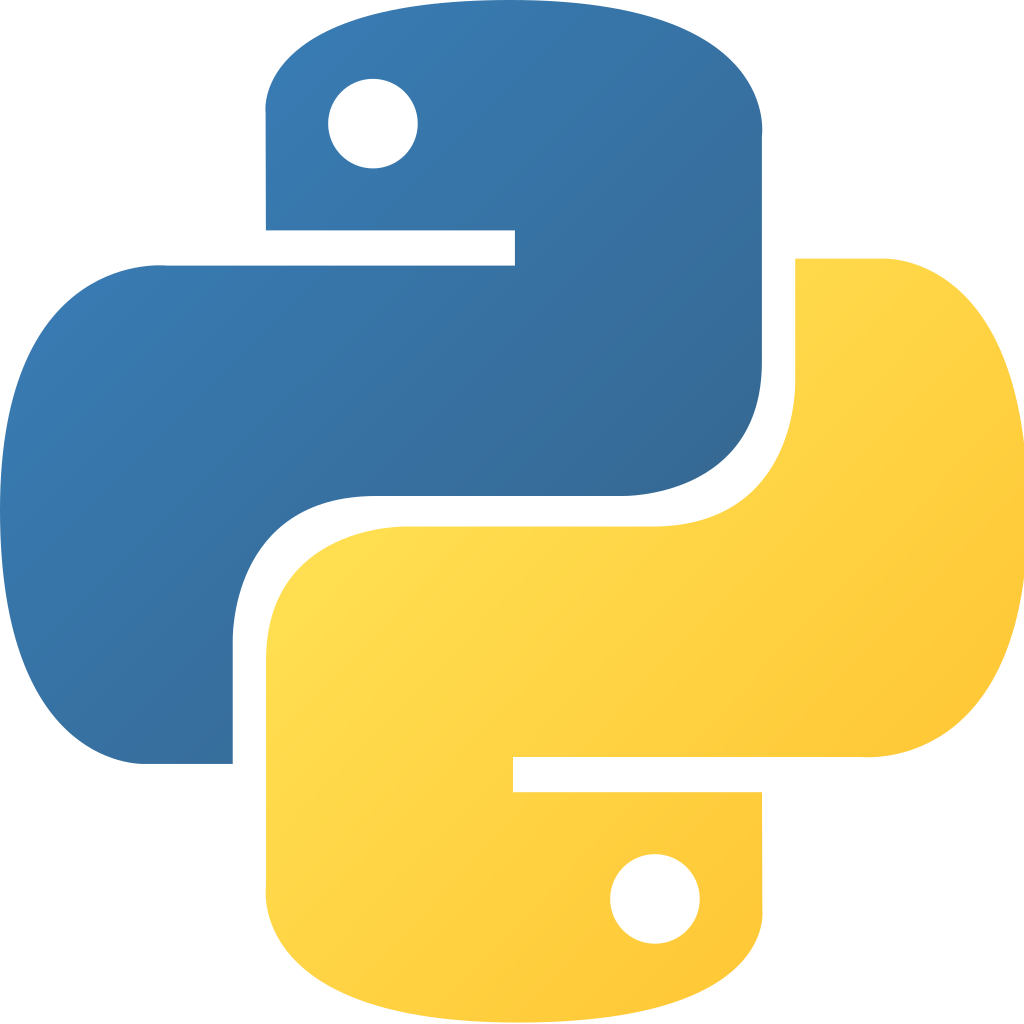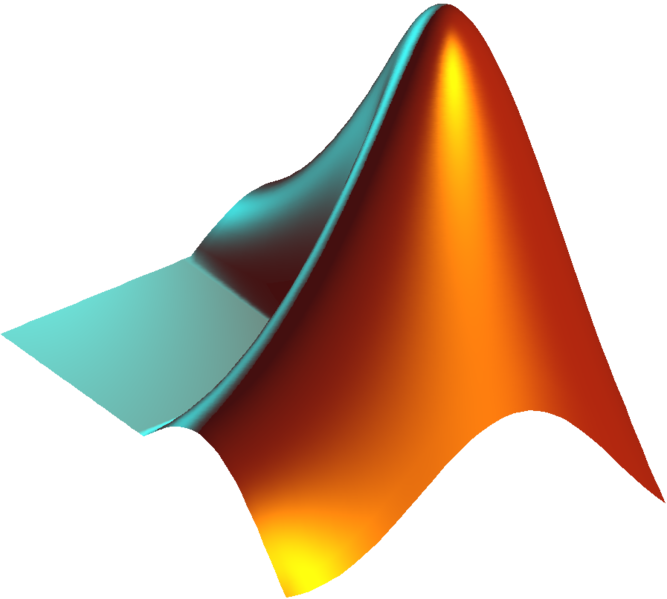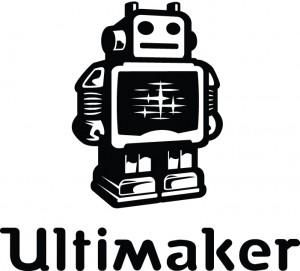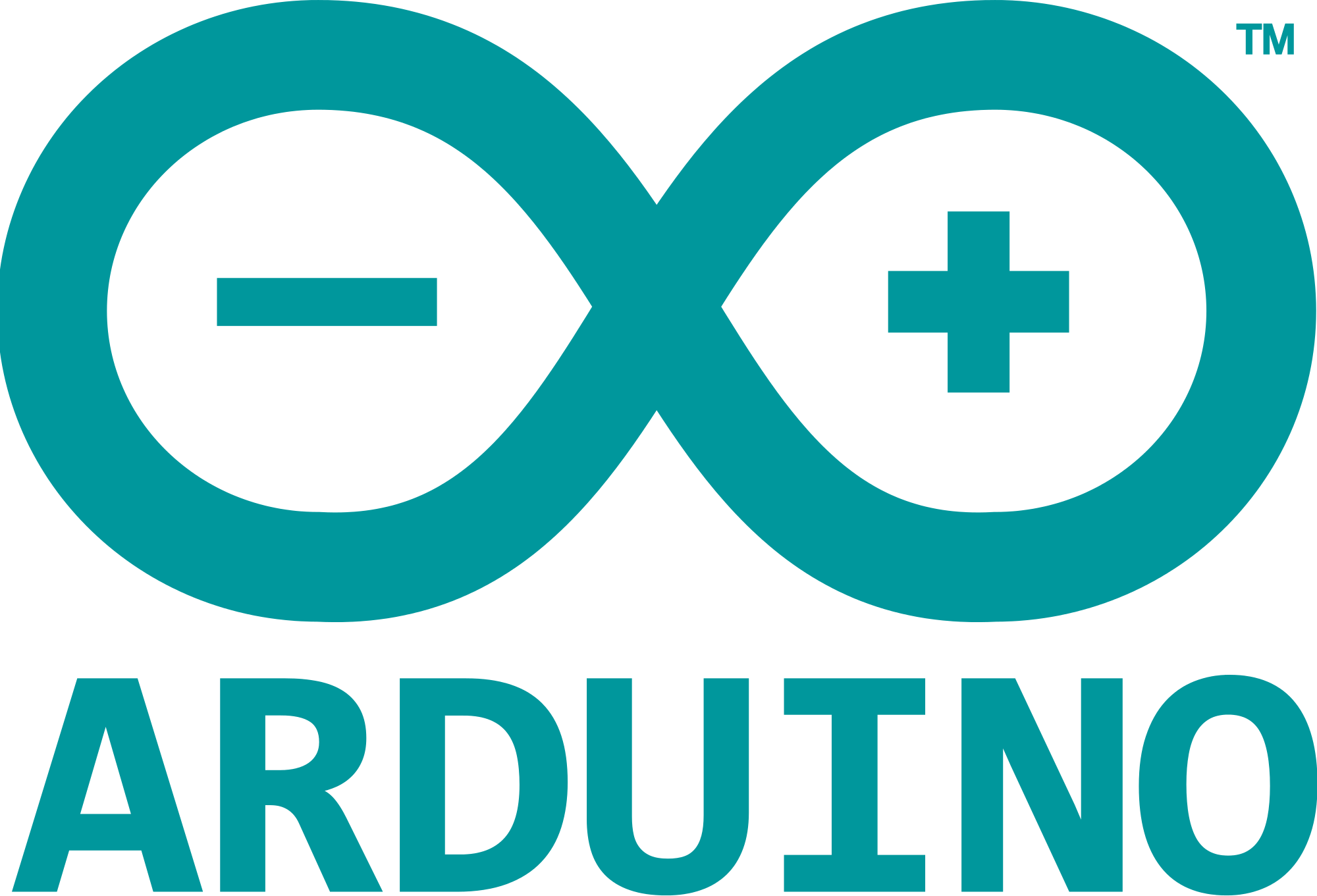

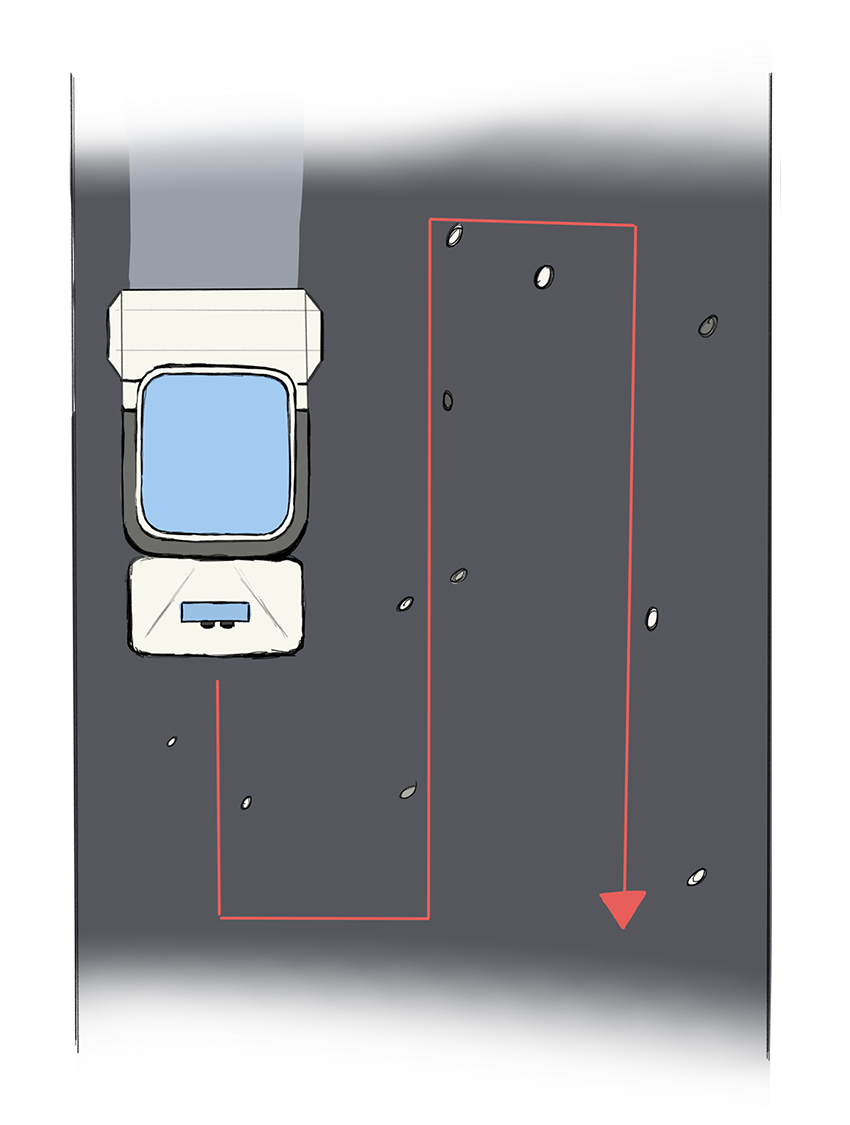
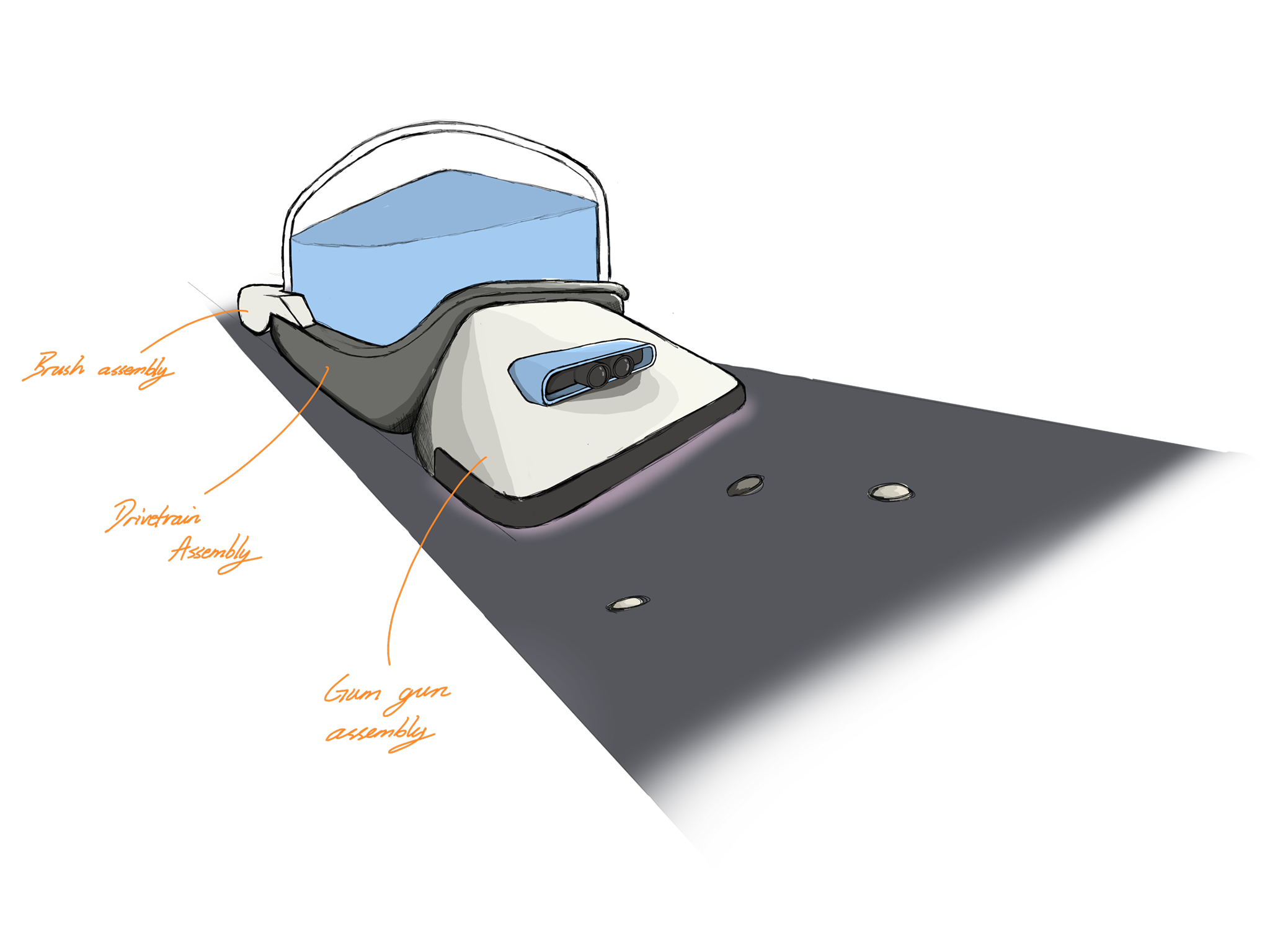
Maintaining street cleanliness is an ongoing complication for many cities in the UK. With the increases in population, especially in densely populated areas such as London, traditional methods of waste management are slowly becoming obsolete. Automation is one such technology that has bridged the disparity between growing public demand and supply constraints. Currently, there are no widely available autonomous public cleaners on the market and none that specifically target pavements.
The aim of this project is to design an autonomous vehicle capable of cleaning pavements of litter, gum and harmful particulate matter. The product will be sold to councils as an effective solution to maintaining street cleanliness with minimal additional investment.
Common types of litter found on streets were investigated through government research reports. these informed the cleaning processes and initial concepts greatly as different manipulators were required for different types of waste. It was decided that particulate matter and gum were to be targeted due to their adverse effects on health, economy and social behaviour.
Current Autonomy technology was investigated. From this, a simple local autonomy system was devised, using ultrasonic sensors coupled with infrared temperature sensors to differentiate obstacles.
An in-depth study of stakeholders (council, tax payers and street cleaners) was carried out to discover their needs. In order to create a well-accepted public robot, the aesthetic appearance must match taxpayer expectations. Thus a product semantics study was conducted with a focus group to establish the desired aesthetics. The bath council expenditure documents were studied to calculate the price of the autonomous cleaner. Street cleaners perform many tasks as well as sweeping streets. Studies have found that in hazardous weather conditions, many cleaners experience occupational injuries due to roadside slips and falls. Hence the autonomous cleaner would alleviate some street cleaning activities for the staff while reducing dangerous working conditions.
There are no current direct competitors and all previously designed cleaners have not succeeded in market. However, through studying non-autonomous devices, existing effective cleaning techniques were found. The two technologies that inspired the final solution were street washing, capable of removing 60% of harmful particulate matter, and modern portable gum removal solutions.
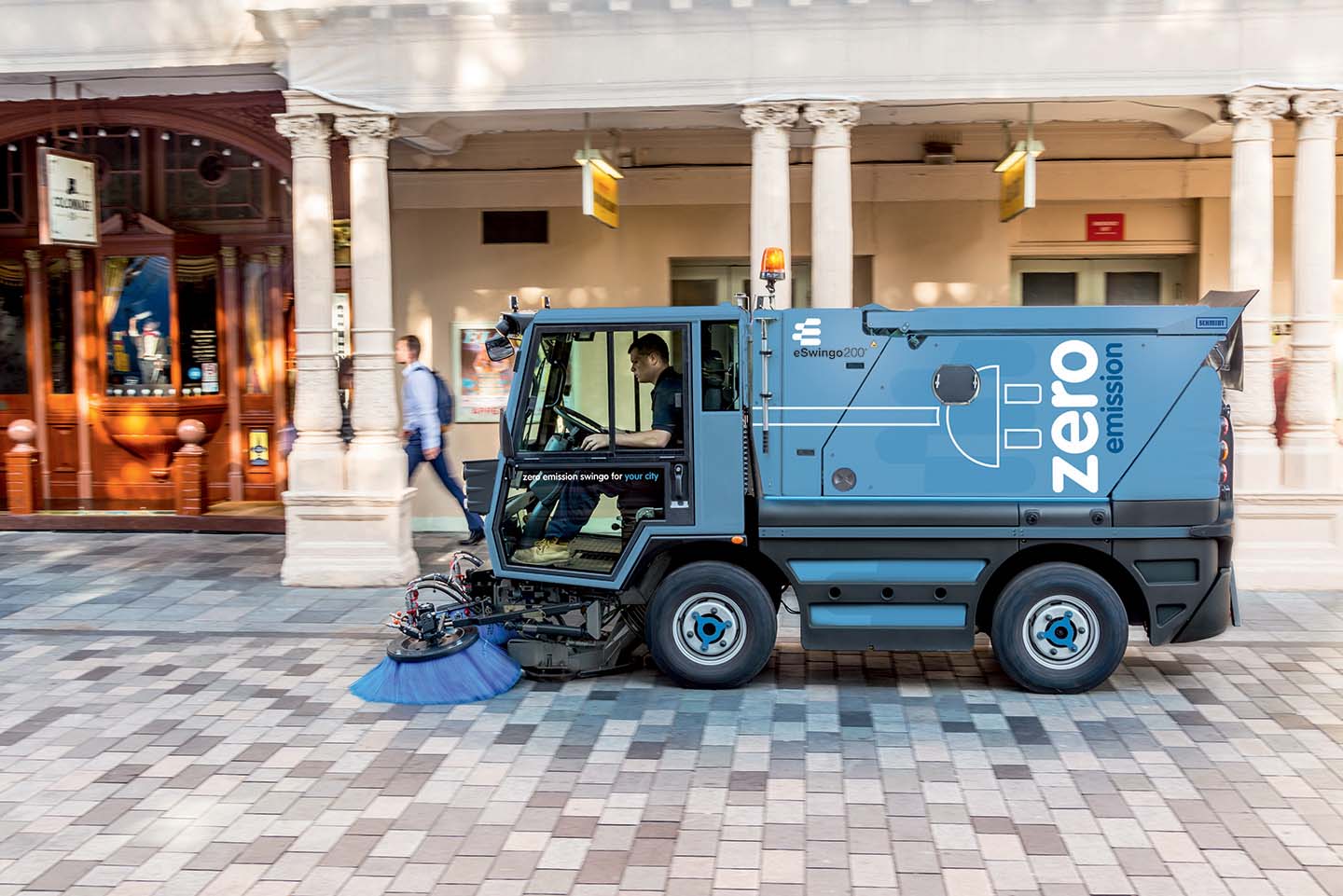
Modern street washing systems use water sprays ahead of gutter brooms which rotate at above 2500rpm. The combination of water and agitation from the broom sufficiently releases the matter from the street. Street cleaning vehicles then absorb the fluid through a regenerative air system. Pavement cleaning use high pressure water to both wet and agitate the pavement, releasing the matter and directing the resultant fluid into drains.
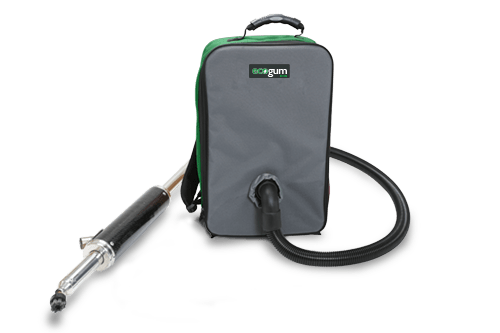
Effective portable gum removal systems exist and use a specific gum removal solution, containing non-ionic surfactants, heated to 90 degrees. The solution is applied to the gum for a few seconds, softening it and loosening its grip from the pavement. Following this, it is agitated through a tough bristled brush removing it from the pavement. Excess fluid is soaked up through a mob or brushed away.
It is suggested that the brush maintains its structure as the gum is 'vaporised' by the solution, hence does not remain on the brush. Hands on research must be done to confirm this, but as of now, research into this existing technology remains undone due to time and budgetary constraints.
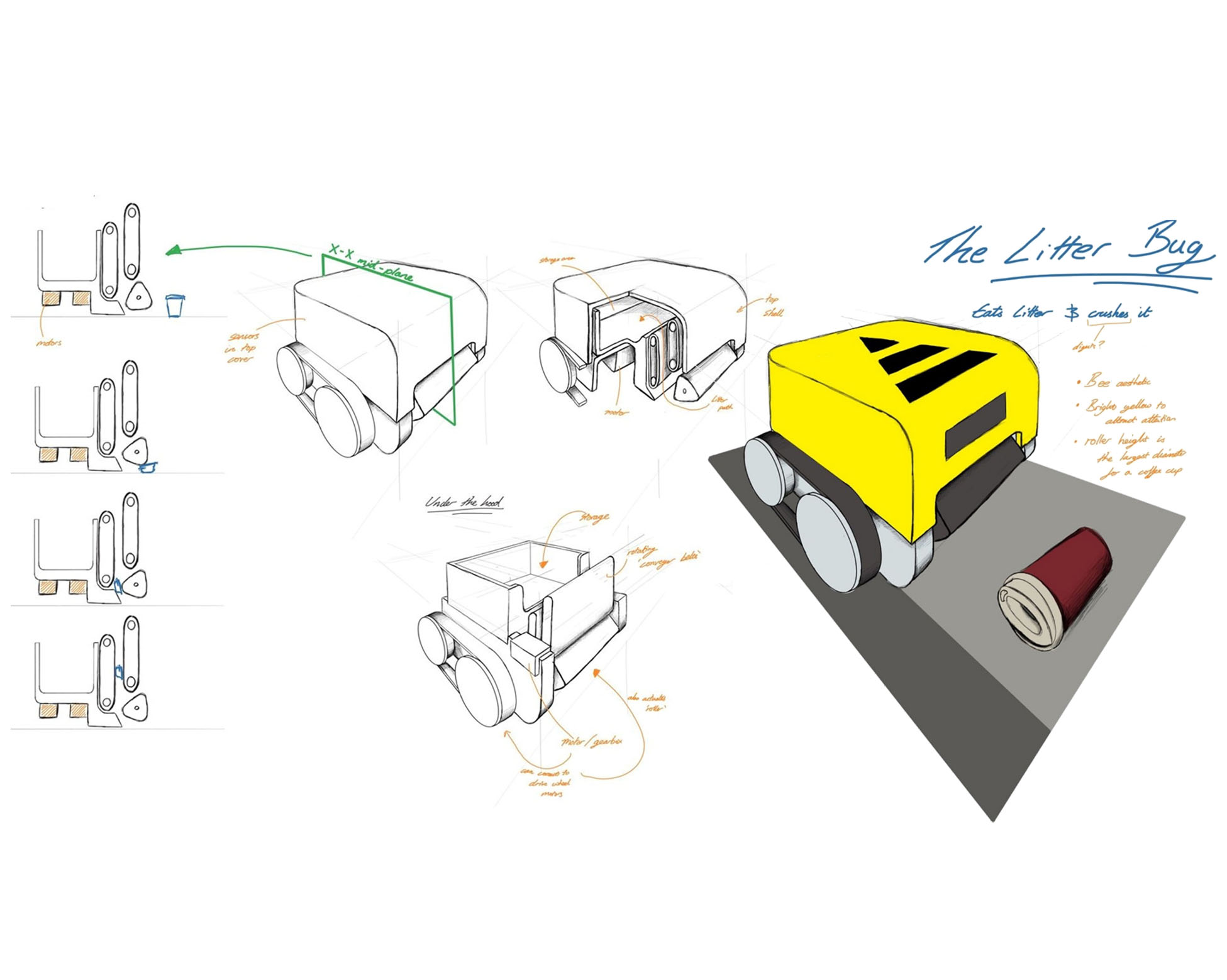
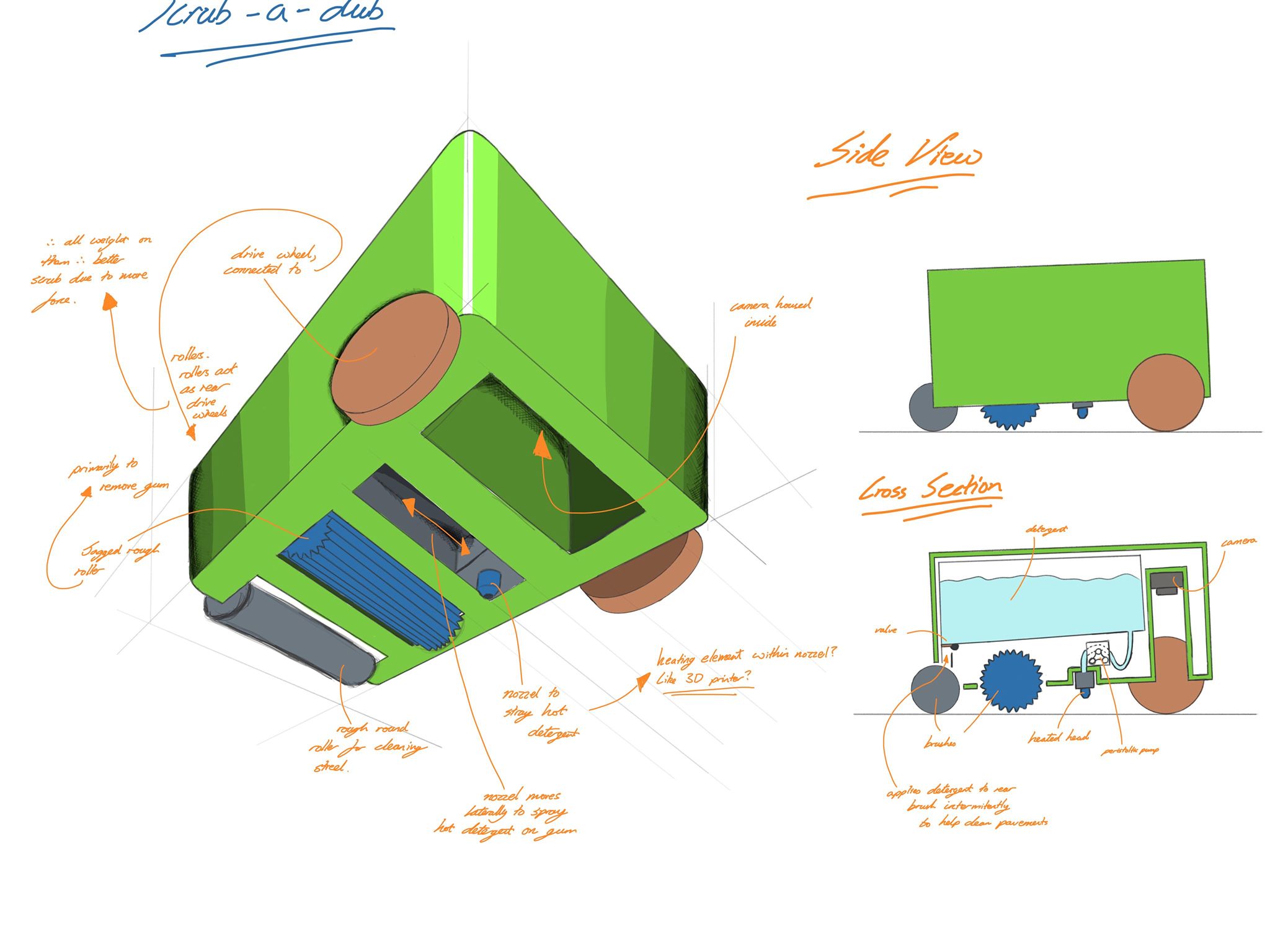
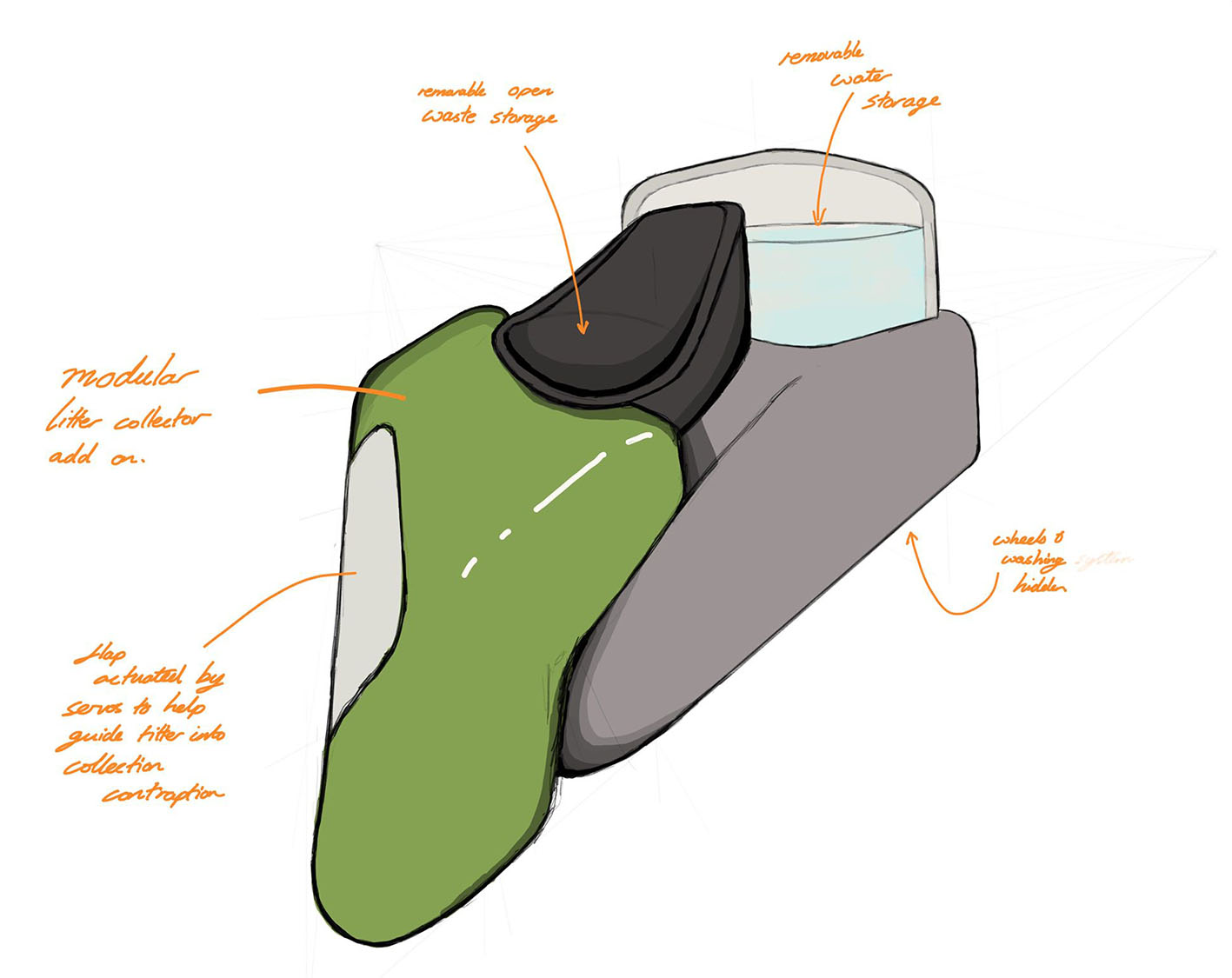
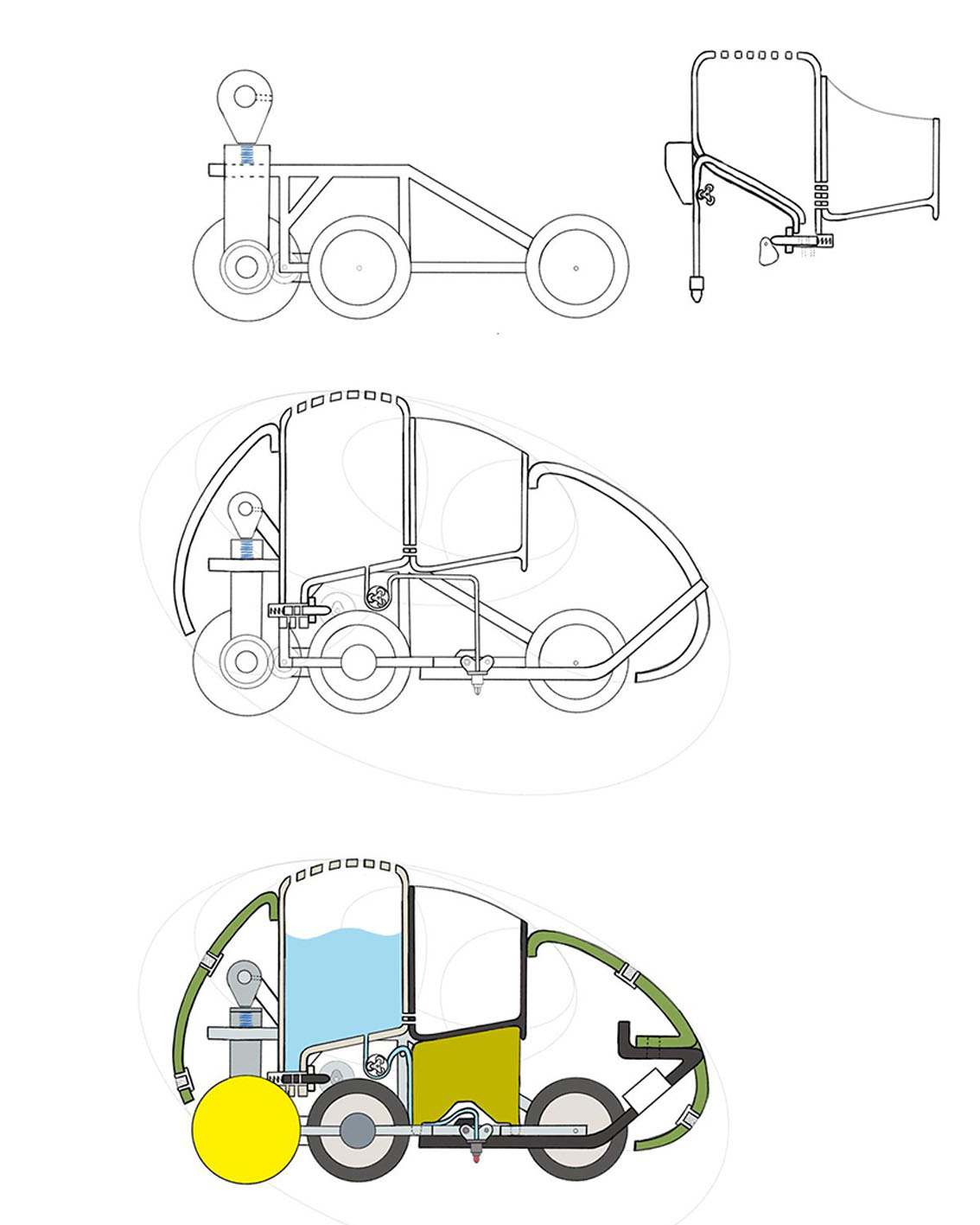
Multiple concepts were evaluated against a specification and three mechanisms were chosen to be developed. For litter collection, a front roller designed to pick up and compress common types of waste. The waste is then further compacted and fed into an on-board storage for space efficiency. Due to the synergy between street washing and gum removal, a compact mechanism capable of performing both tasks was designed. At the leading edge, a heating gum removal solution will be applied to 'release' the gum from the pavement. An on-board water storage constantly feeds a rotating rear brush that performs both the street cleaning and gum removal tasks simultaneously.
A design to incorporate both mechanisms was developed. The cross section of the developed design can be seen on the left. Due to the scope of the project the litter collection aspect was abandoned.
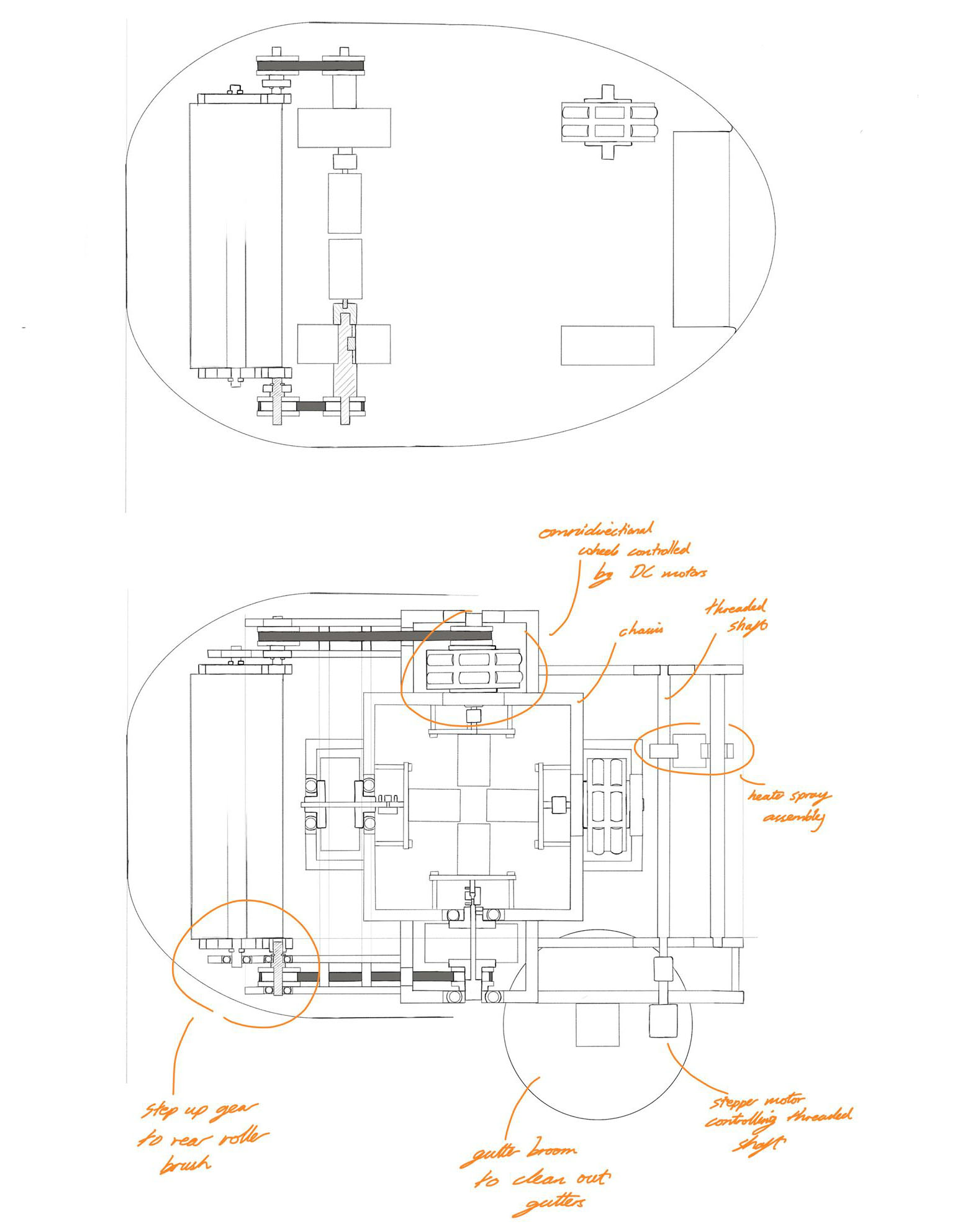
The design of the drivetrain was changed from a simple rear wheel drive with two DC motors to an omnirectional drivetrain allowing for more methods of movement. This allows for greater positional accuracy and more predictable movement, reducing the likelihood of accidental collisions with the general public.
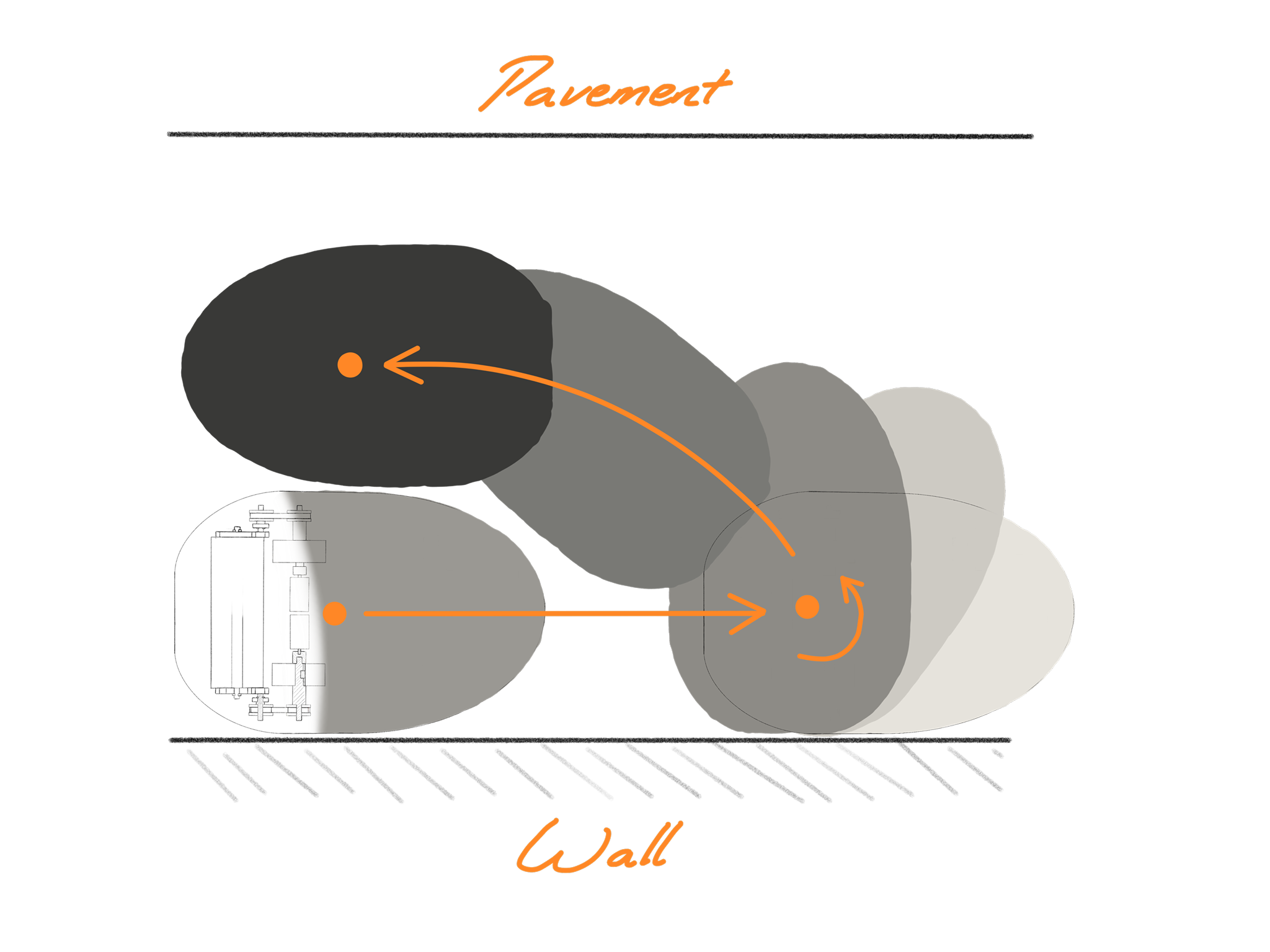
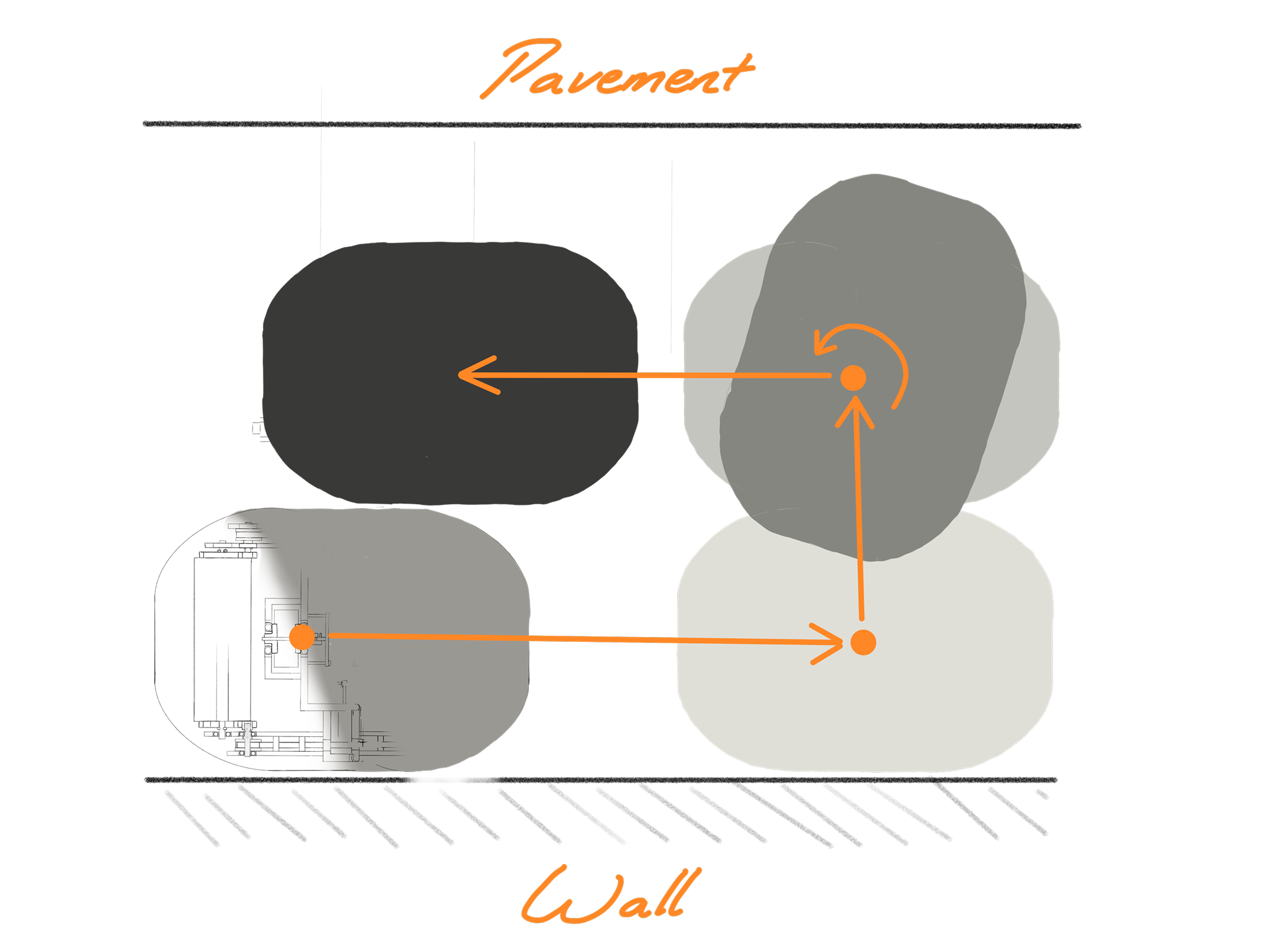
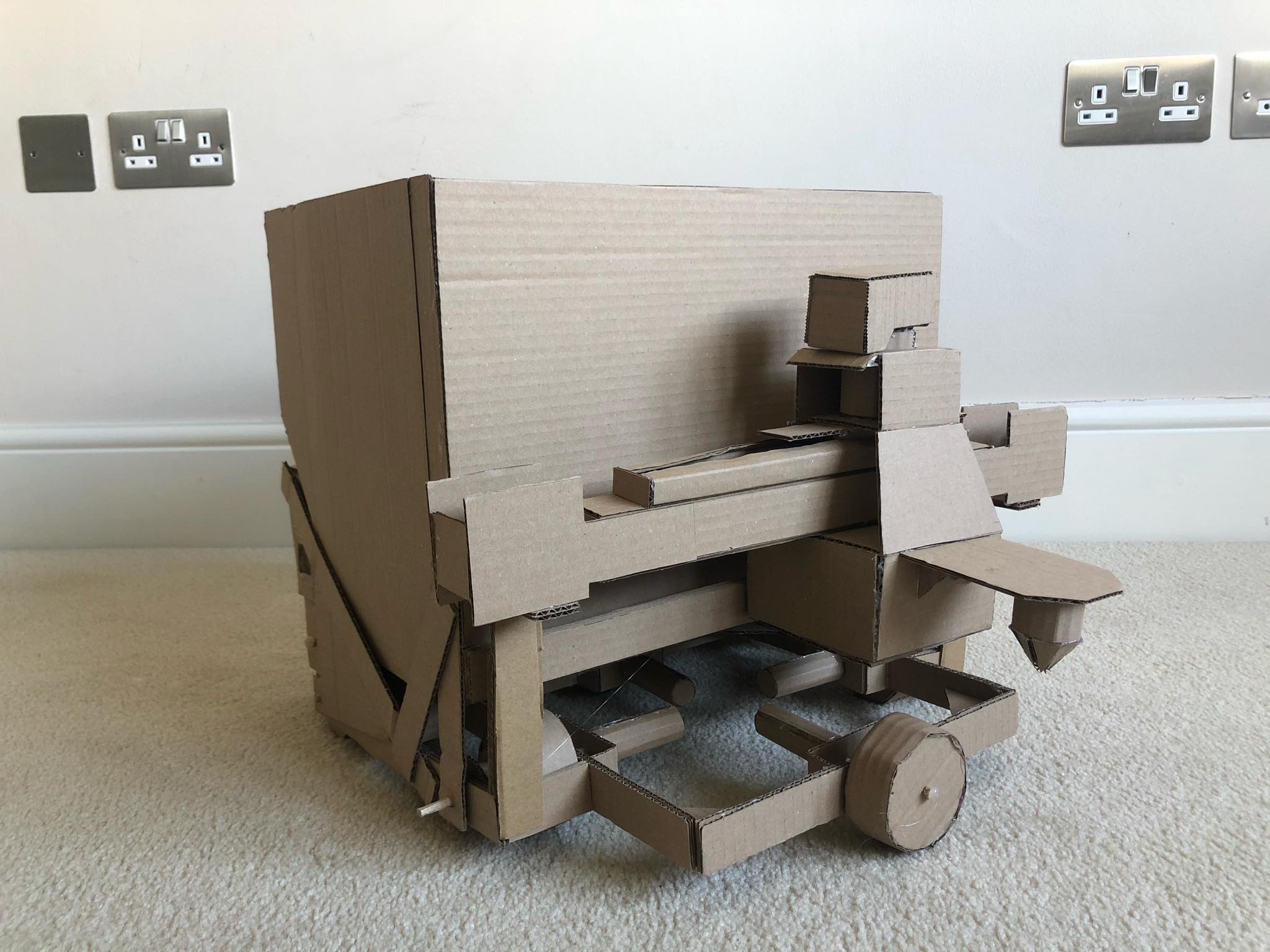
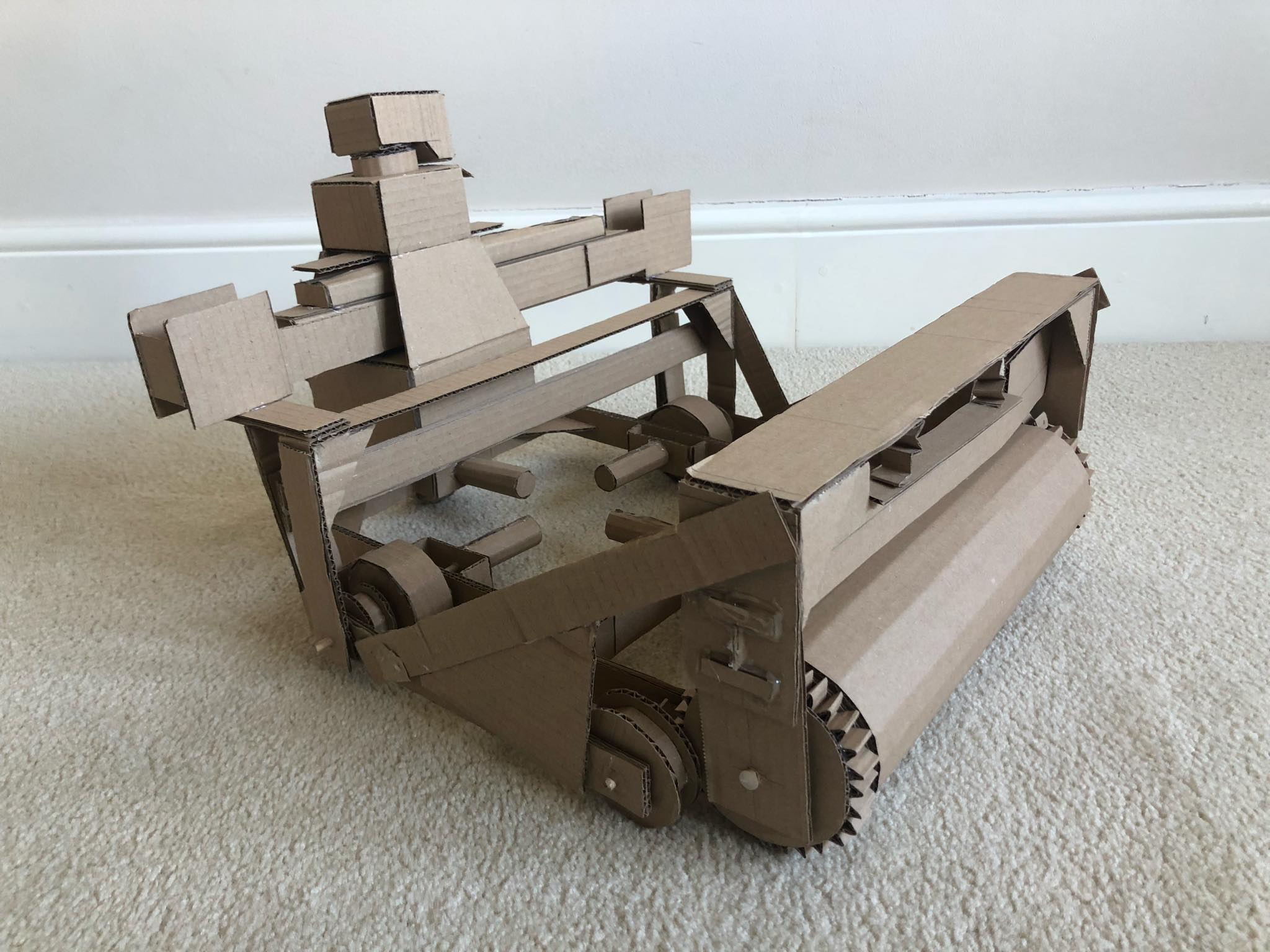
A scale cardboard model was produced in order to understand the geometry of the product, possible structurally weak areas and how the components could be implemented into the design. Using the model for scaling, an accurate CAD model of the proof of principle prototype was produced (below).
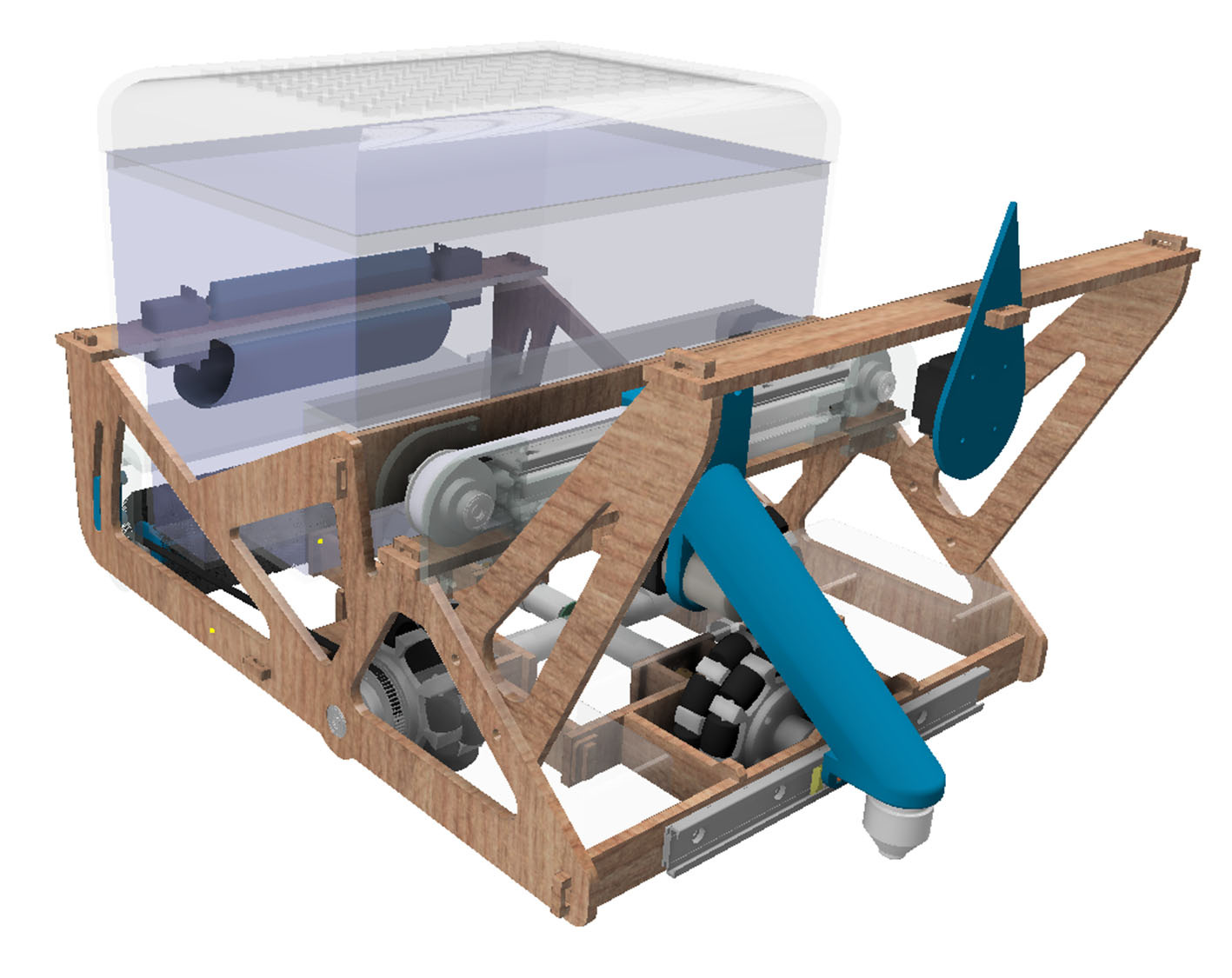
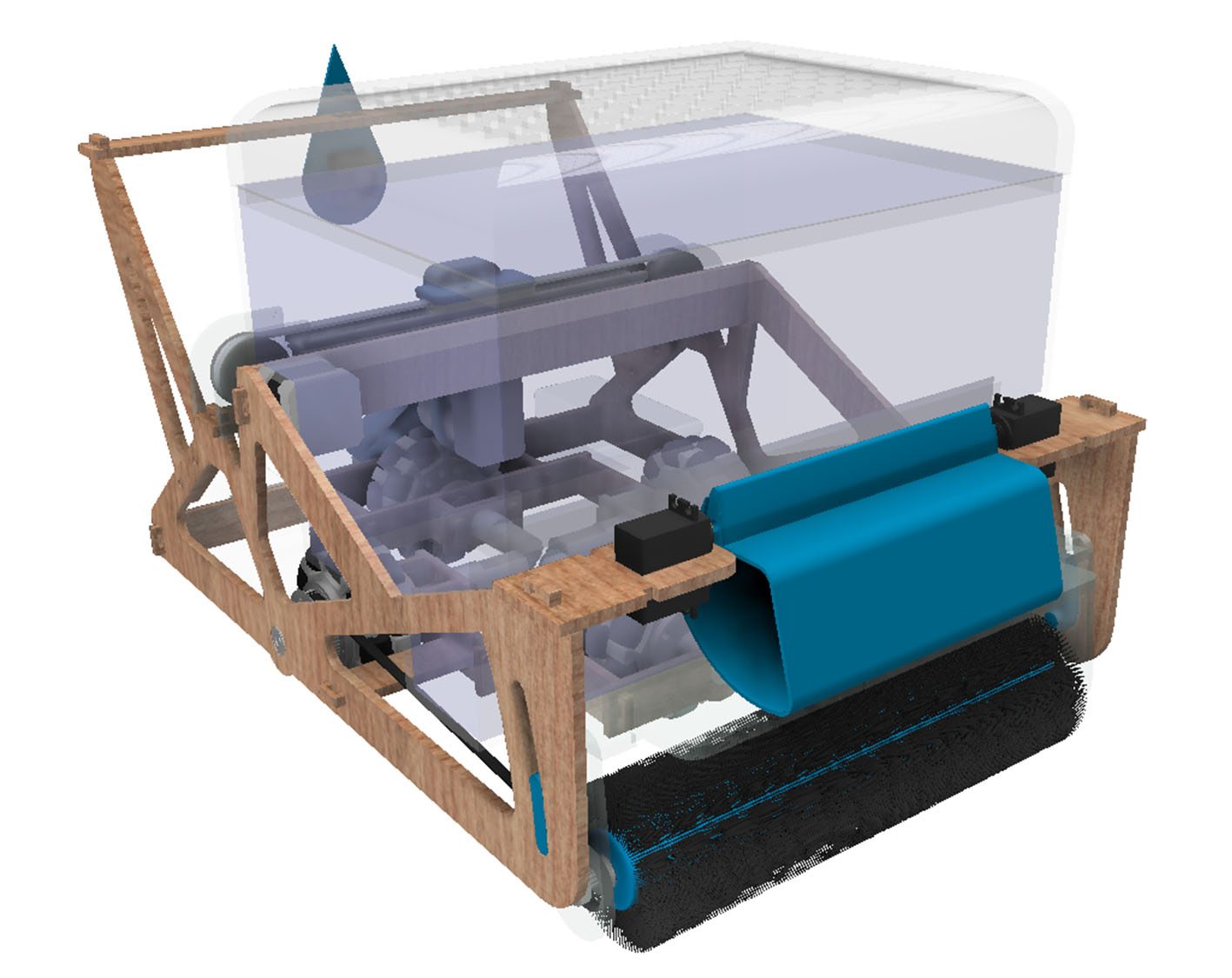
The drivetrain consisted of 4 omnidirectional wheels separately driven by geared DC motors allowing for a greater number of movement methods.

The wheels are directly driven through a coupling and a bespoke shaft. A timing pulley is then attached to the outside of the wheel. This was used to drive the rear brush bar.
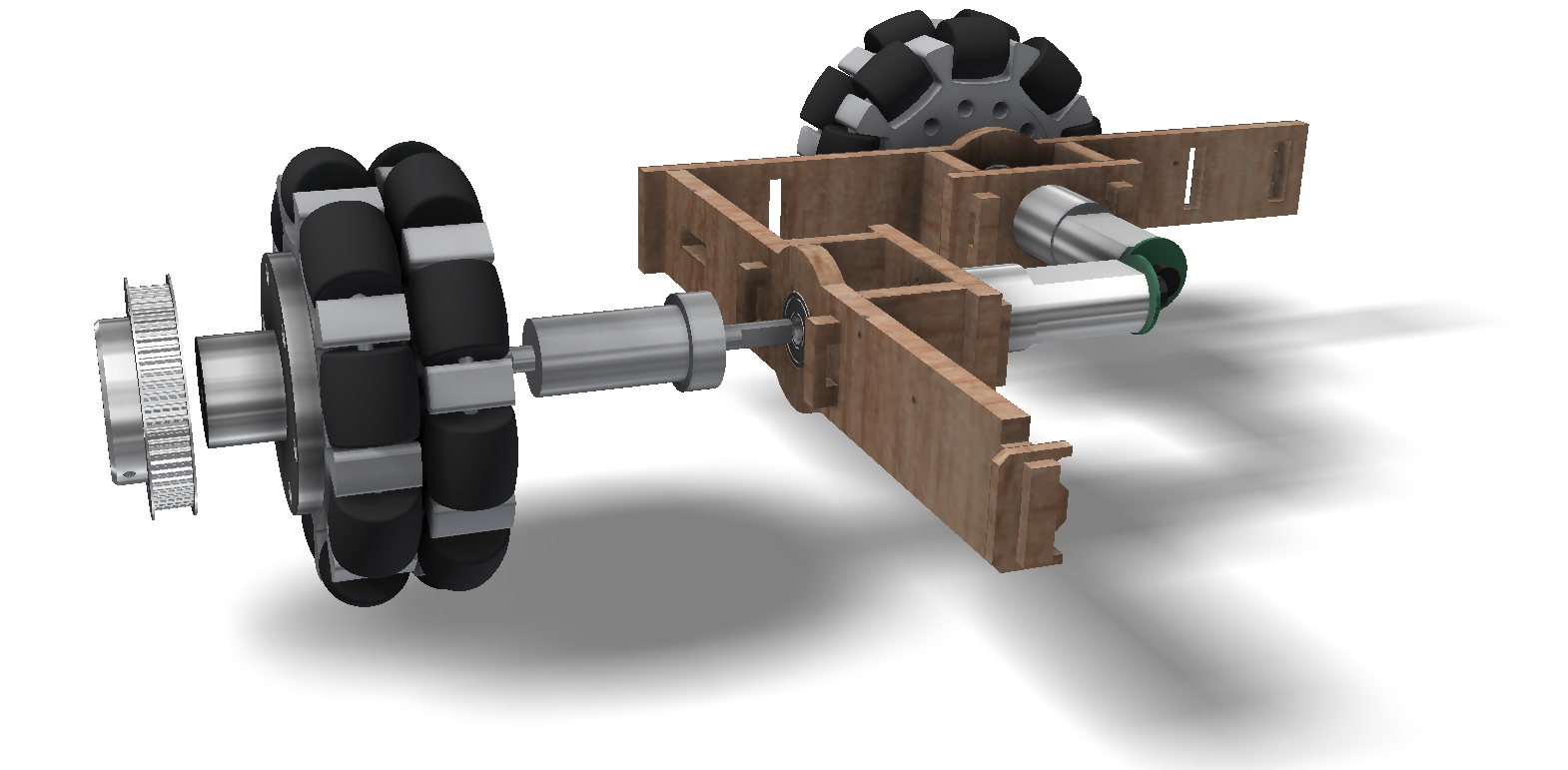
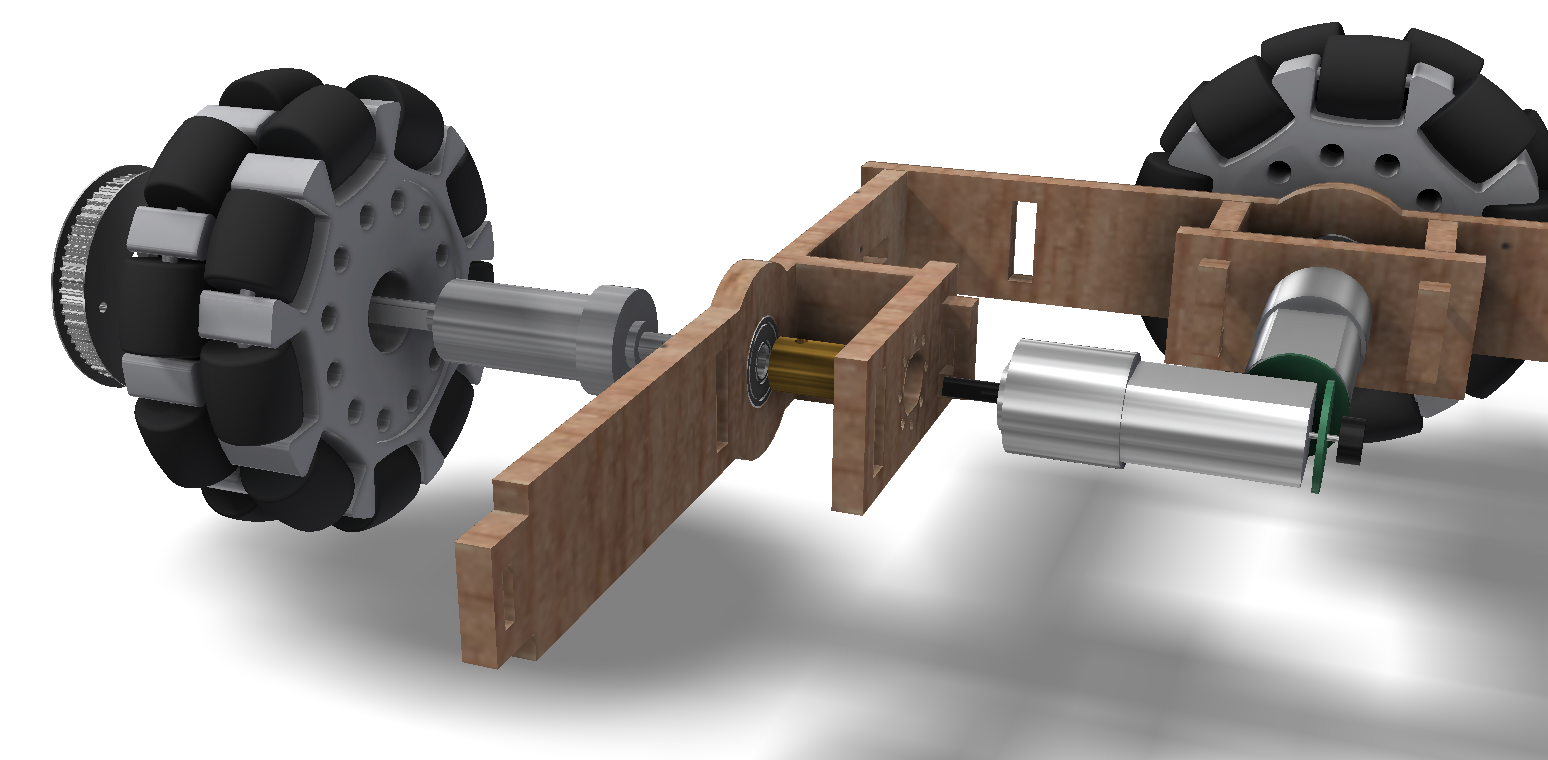
I machined the bespoke shafts and couplings out of mild steel and 3D printed the timing pulleys. The components were assembled onto a laser cut MDF chassis.
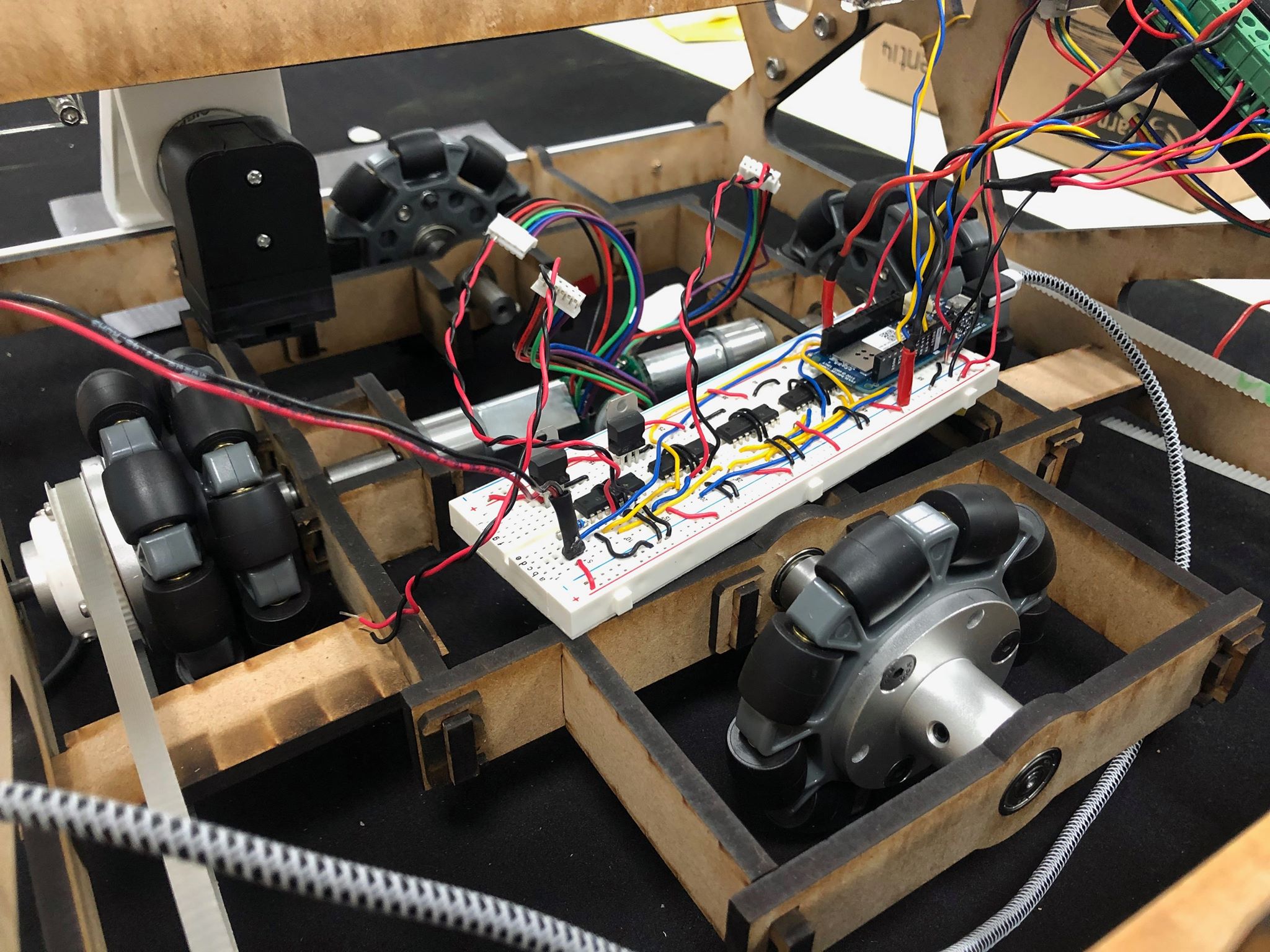
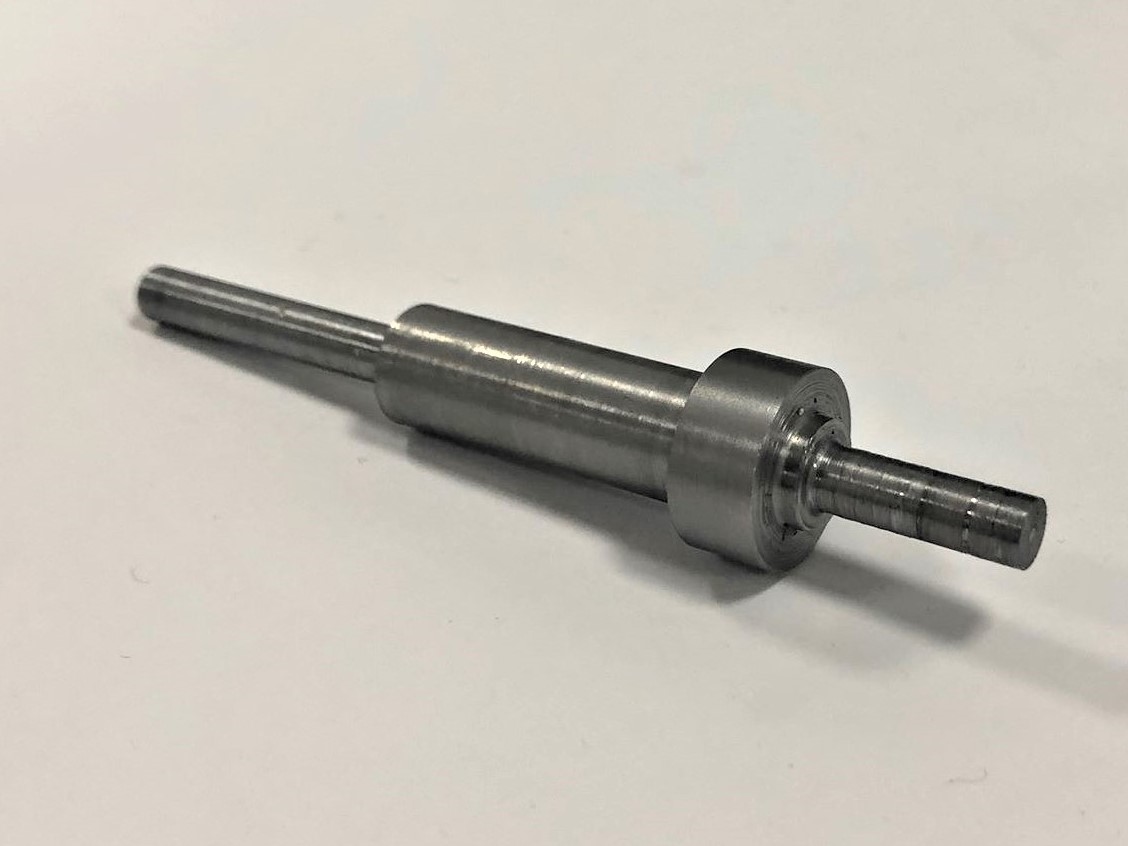
The drivetrain is controlled by an Arduino through 4 h-bridges. A voltage regulator reduced the 12V Li Po battery supply to 5V for the h-bridges.
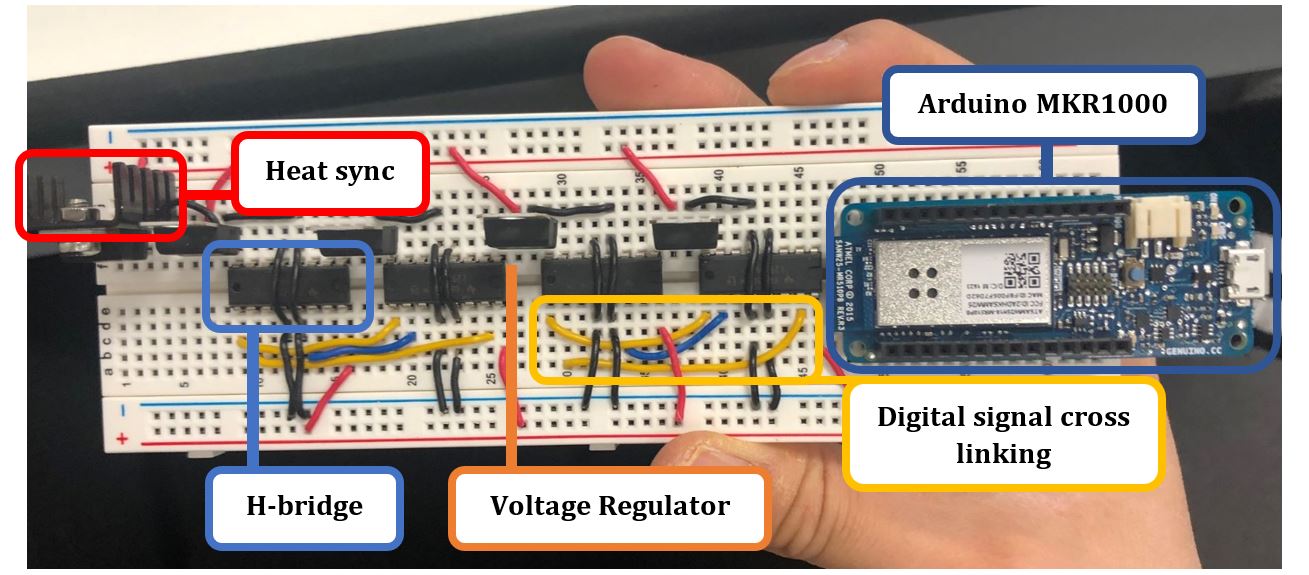
Control software was written on MATLAB Simulink due to its synergy with hardware. A truth table was used to translate input signals from an analogue stick into motor movement.
The motors could not drive the vehicle reliably due to innacurate manufacturing tolerances and faults in the electronics. However, it functioned to prove the possibility of greater mobility.
The gum removal system consisted of gum detection and spray head placement. The spray head consisted of a motor pump connected to a heating chamber and pressure valve. When the gum removal solution is heated to the required temperature, the motor pump is activated and pumps the liquid into the pressure valve, building up pressure. When suffcient pressure is reached, a consistent volume of liquid is expelled at a predictable speed. Due to time constraints, this aspect of the design was not created however was designed.
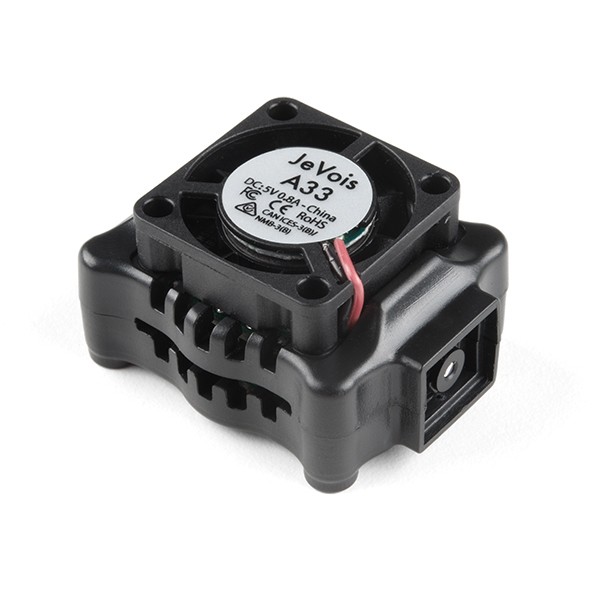
The machine vision, spray head placement and system autonomy were developed. Machine vision was written on Python OpenCV and implemented through a JeVois camera module. The JeVois was used as it contained its own microprocessor, capable of processing python code, allowing for fast detection and reaction to its environment.
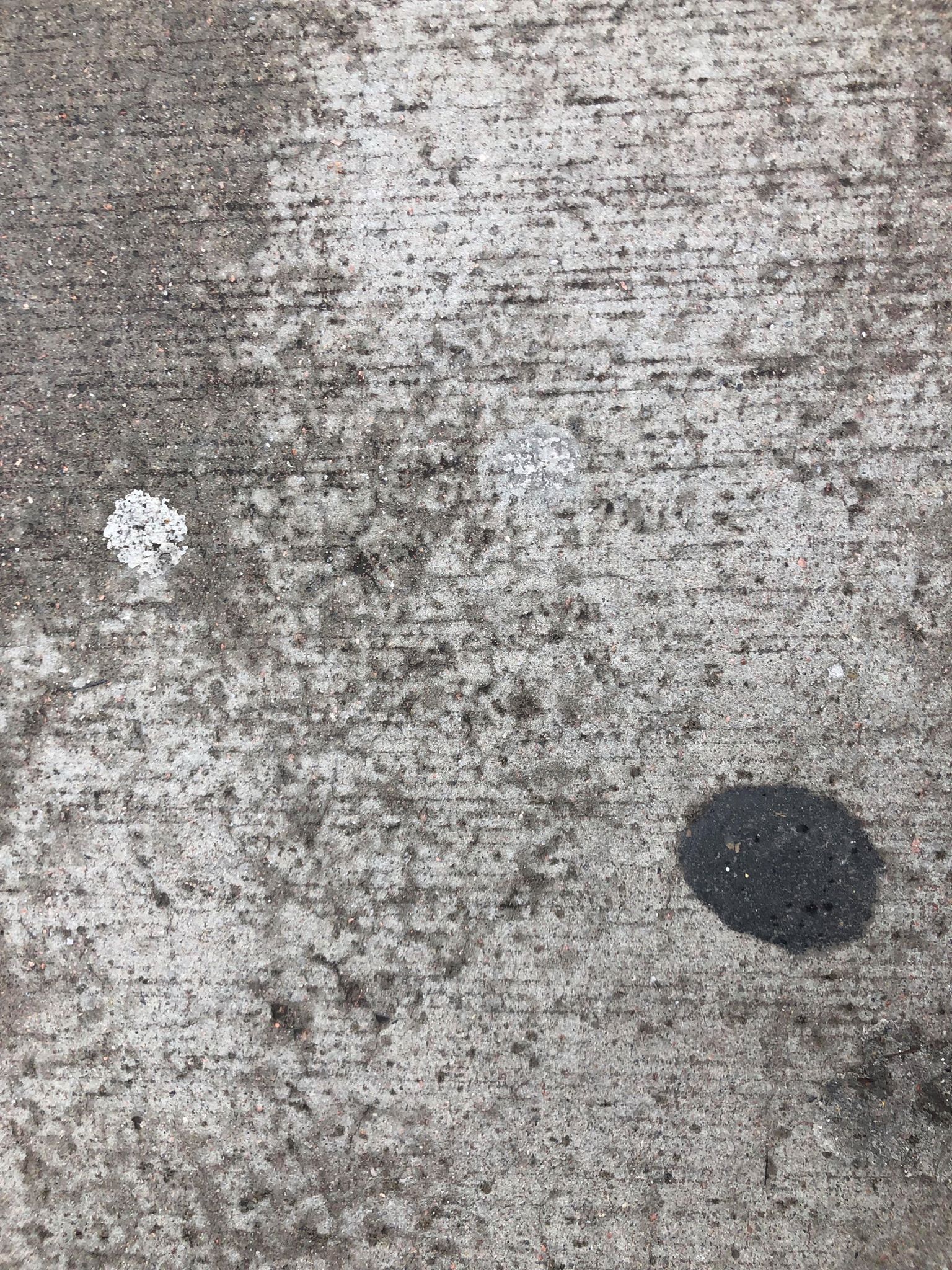

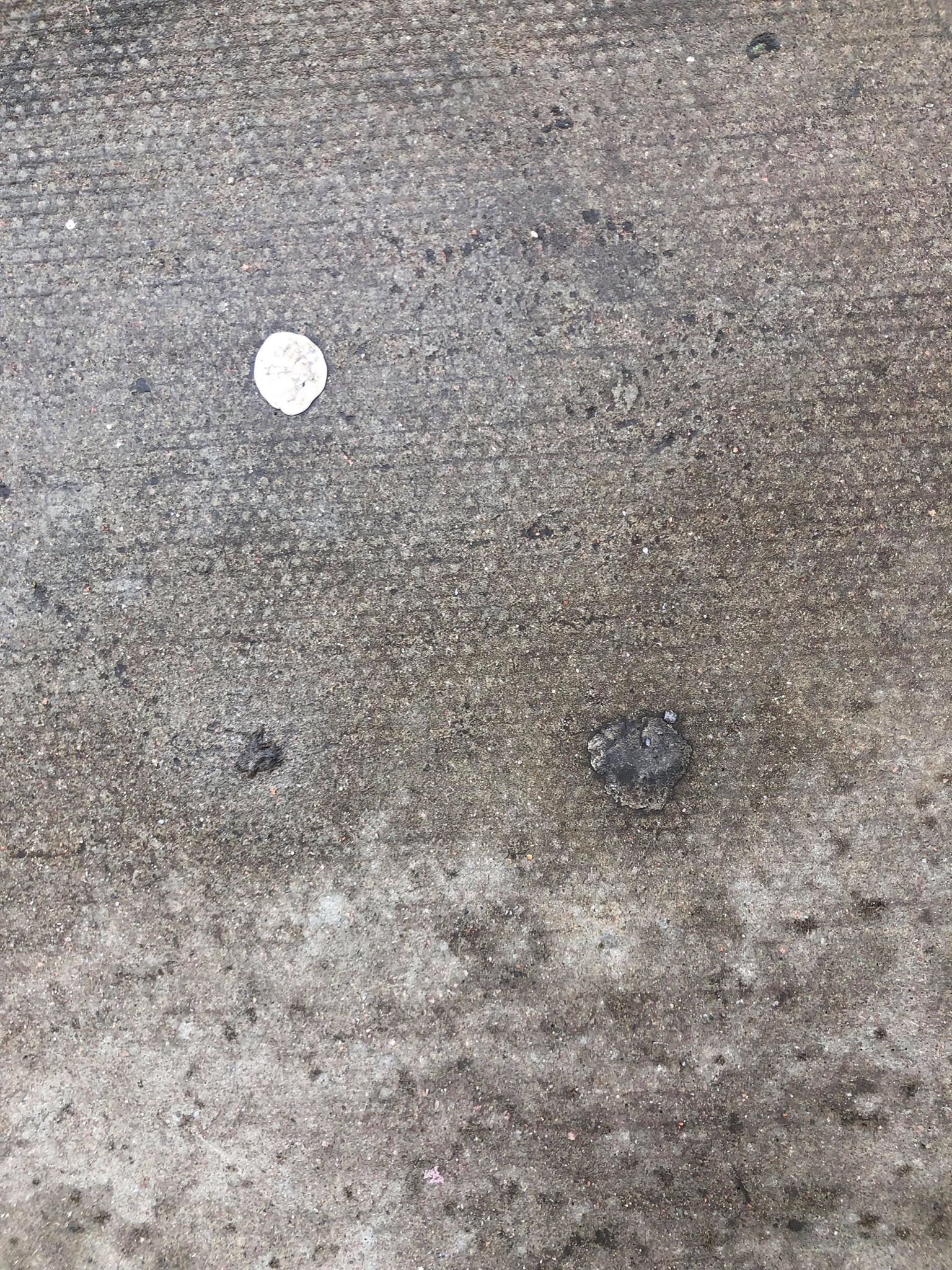
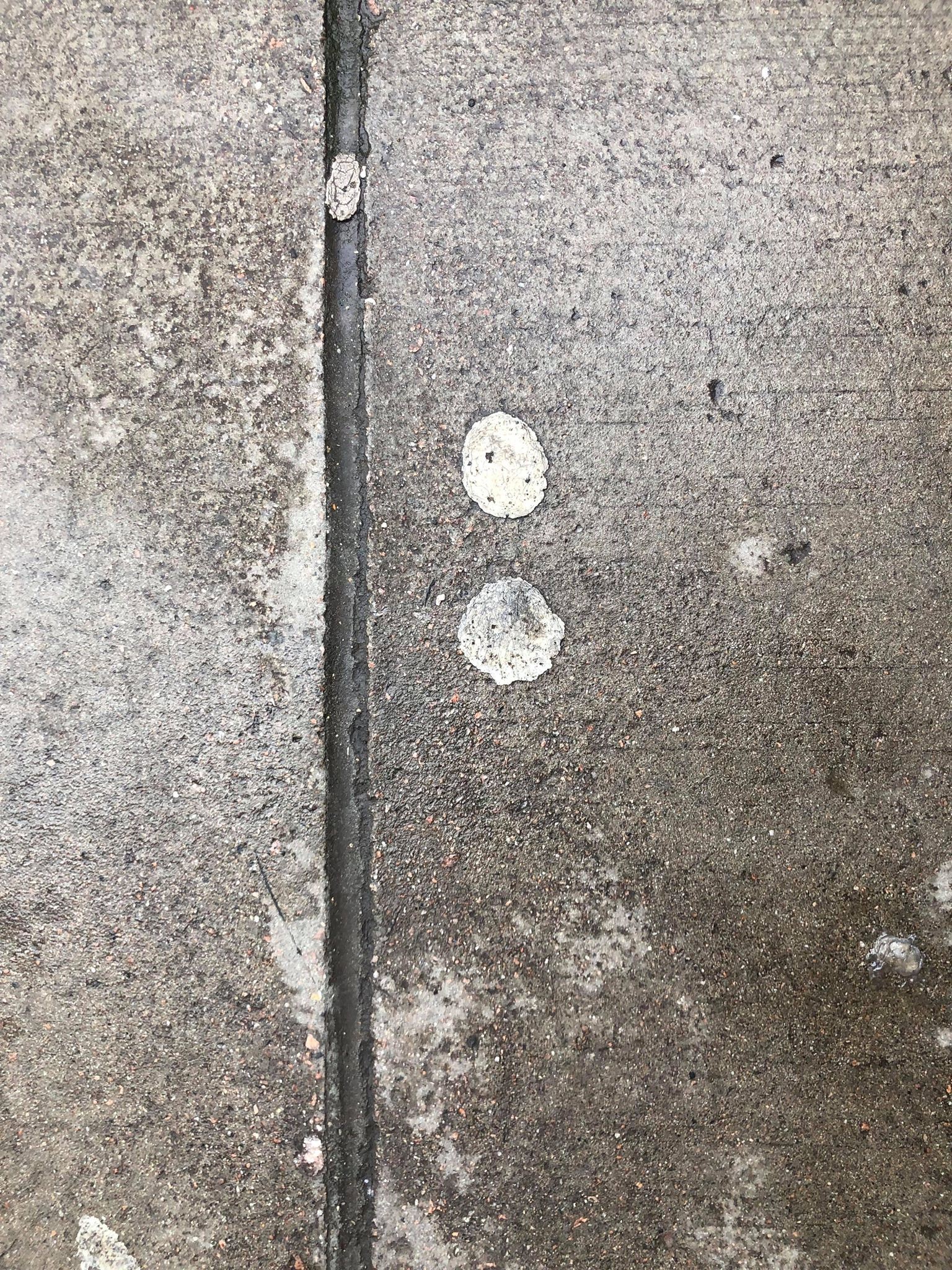
Machine vision code used edge, brightness and shape detection to differentiate the gum from its surrounding area. Initial tests with colour detection was attempted however unsuccessful. In future iterations, it would be ideal to also implement colour detection for verification as brightness detection alone had difficulty reliably sensing gum.
The camera applies an edge detection filter followed by a threshold filter to determine the bright areas of the picture with respect to a threshold. Within this image, vertices are placed. The number of joined vertices dictate the shape (e,g. 3 = triangle). With a specified number of vertices, unwanted shapes can be filtered out until a shape resembling a circular gum stain is detected. The coordinates of the detected pieces of gum are then serially sent the Arduino.
A rear brush, with height controlled by two servos connected to a CAM, provides agitation removing the gum from the pavement following gum removal solution application.
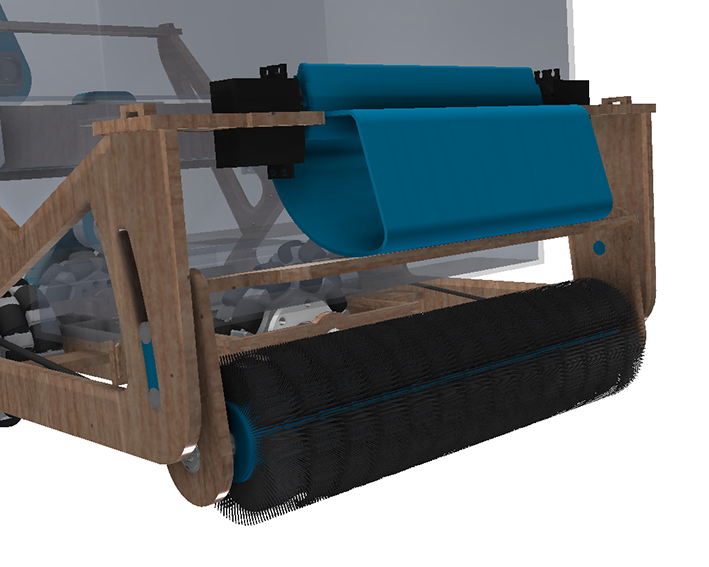

The rear brush is linked to the drivetrain through a step-up pulley system, so as the robot moves forward, the brush is rotated at a higher velocity, lowered and provides cleaning agitation to the pavement.

Gantry control code was made through use of a state machine. Depending on the coordinated received, the values would be translated into rotation required by the stepper to align the spray head with the dried gum.
Manual coordinate entry was initally done to test the system and the design was improved. Serial communication was then established between the JeVois and Arduino controlling the stepper motor. The data was processed through a truth table.
The output of the data conversion code was input into the state machine of the gantry control code. This created a fully autonomous detection and movement system.
The drivetrain was also incorporated into the autonomy. The system successfully functioned autonomously in a straight line.
The system was then tested outside in an uncroncrolled environment. It had difficulty extinguishing between bright spots in the pavement and gum. Many faults were found and improved upon in the final design.
The street washing mechanism consists of the rear brush bar and a water tank. The water tank feeds the rear brush consistently through a CAM connected to a servo. This allows for a constantly wet rear brush providing effective street washing and thus efficient particulate matter removal.
Due to time constraints, this aspect of the design was not fully realised. However, the dimensions and capacity of the water tank was developed to ensure a thorough design specification.
The final design improved upon the faults seen in the prototype. The main faults of concern were the effect of an uncontrolled environment and time delays seen in the system due to the microprocessor clock speed.
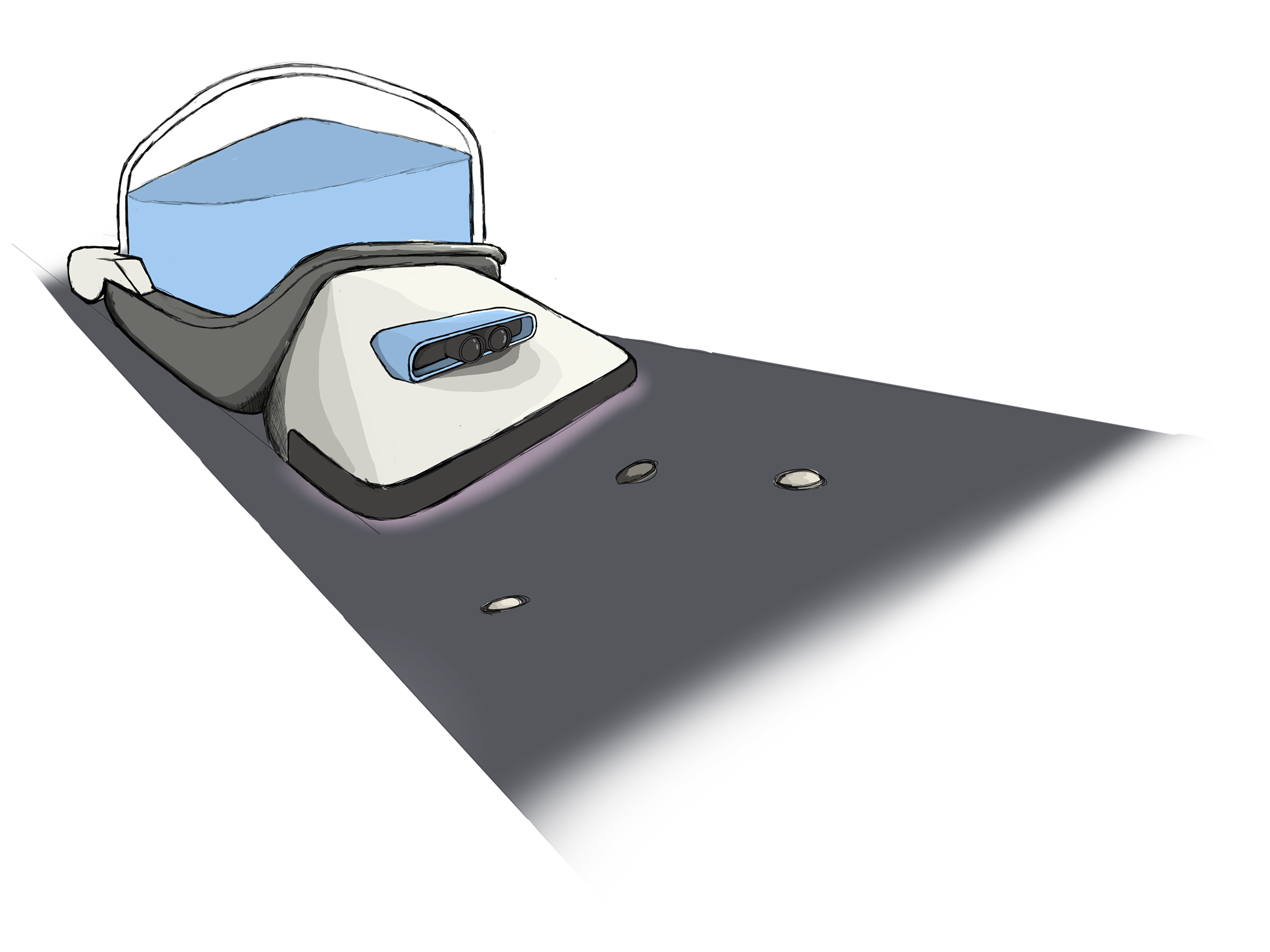
The final design consisted of three modules each controlled by a separate microprocessor, eliminating time delays. The machine vision was housed within a casing to create a controlled environment for gum detection, increasing detection reliability.
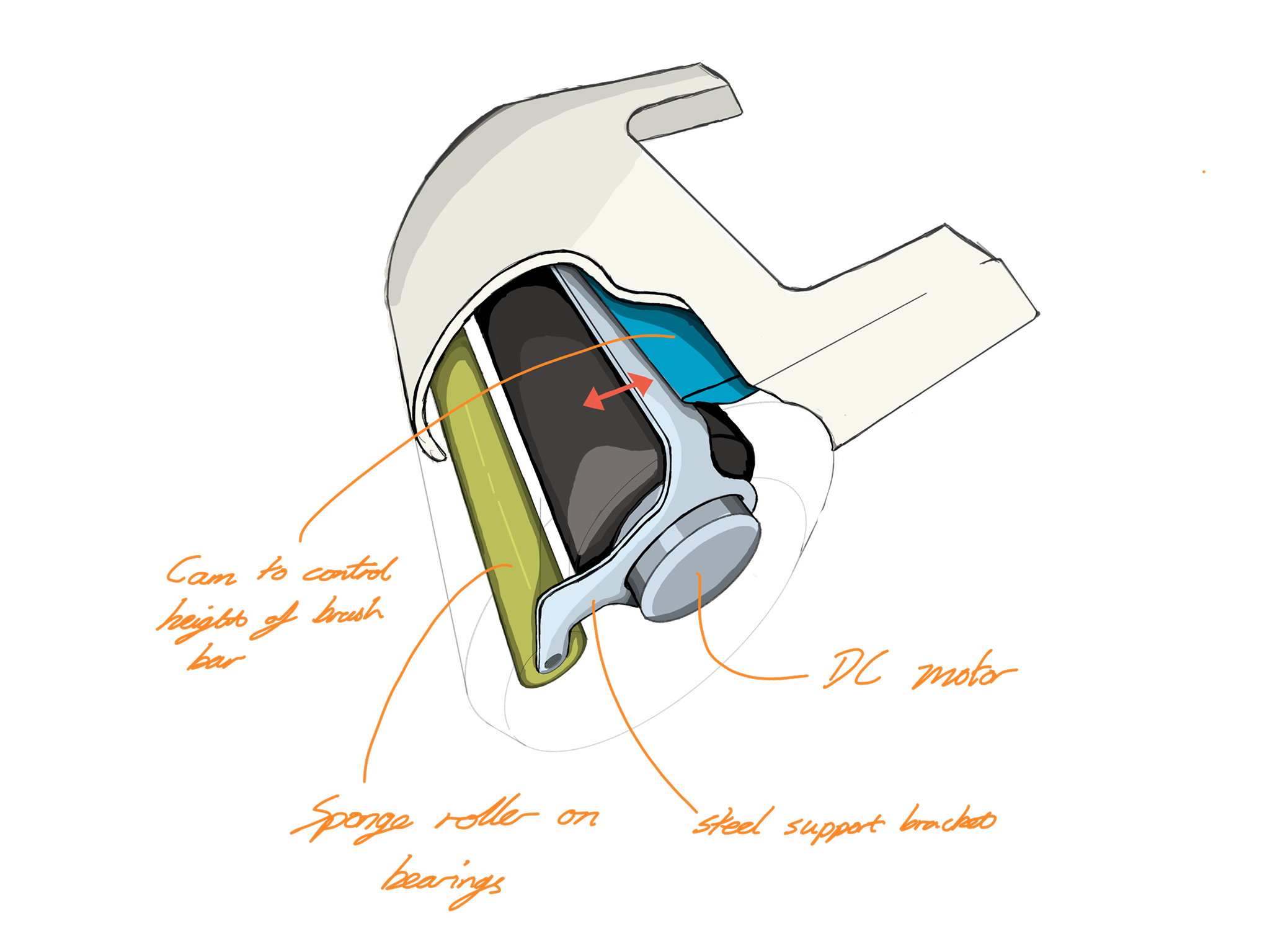
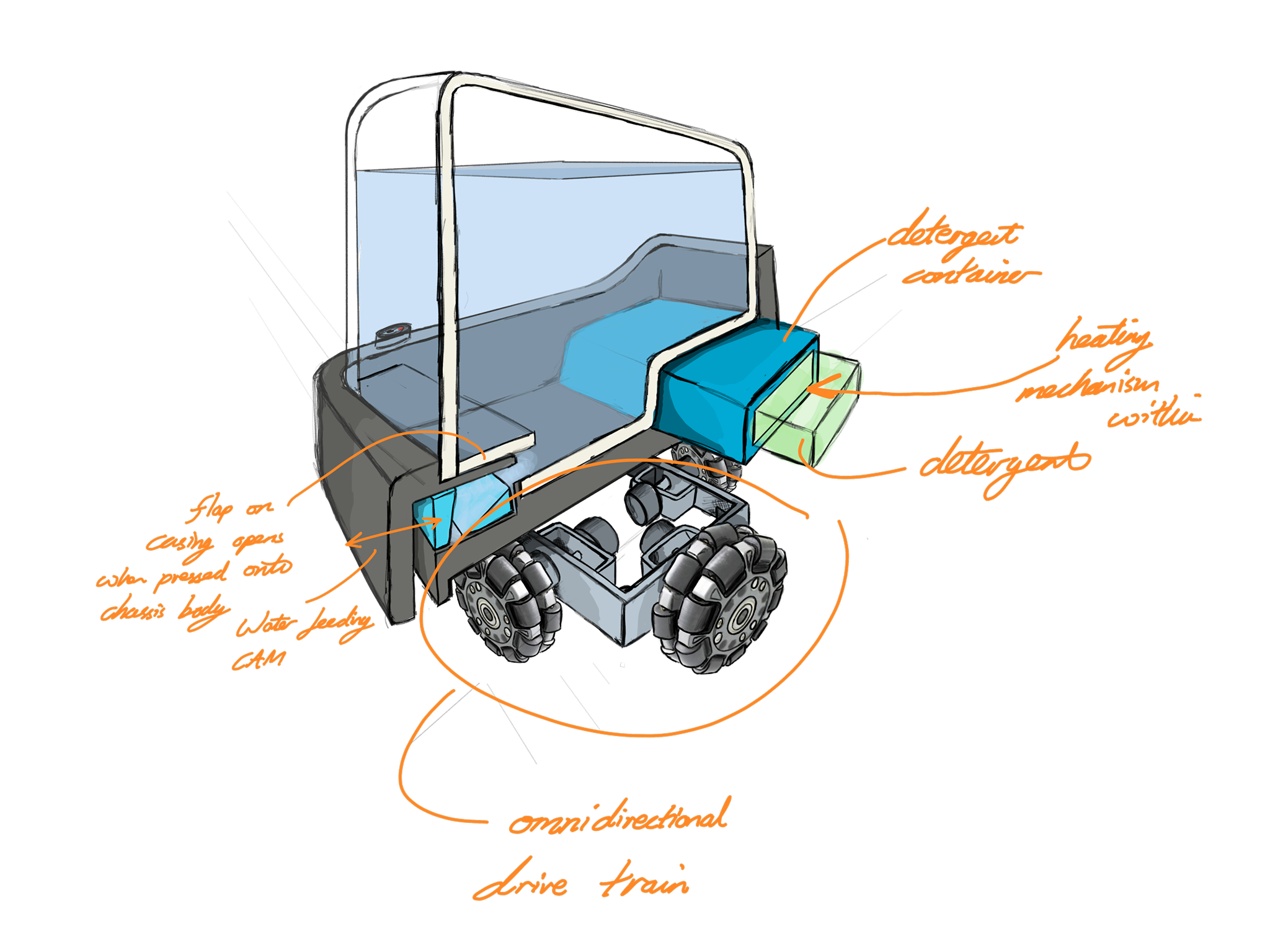
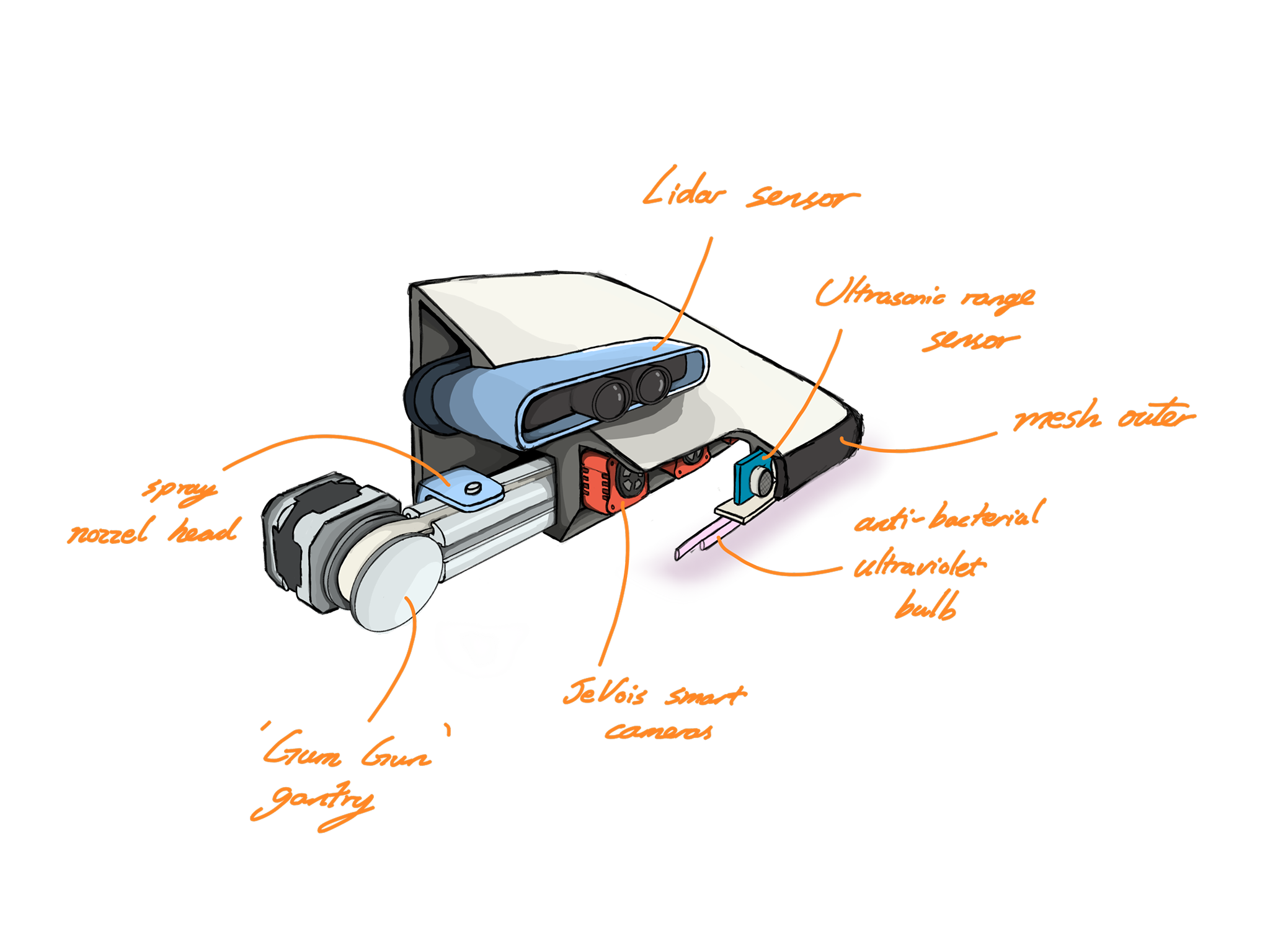
I am confident the final design can reliably clean the streets, efficiently removing particulate matter and gum stains. However, a system of charging docks, by converting smart bins into the robot hubs for example, must be created to support the system. The hubs must also offer refilling of gum removal solution and water as well as testing the system for faults and communicating any errors to mission control. These are all part of required future work.
